SEE ALSO:
Monastic Midlands Archaeology Field School https://iafs.ie/monastic-midlands-summer/
Forensic Anthropology Field School: Dead Men DO Tell Tales! https://iafs.ie/forensic-anthropology/
Dates: Project Dates:
Bondi Period 1: Sunday 6th July to Sunday 13th July 2025
Bondi Period 2: Sunday 13th July to Sunday 20th July 2025
Bondi Period 3: Sunday 20th July to Sunday 27th July 2025
Bondi Period 4: Sunday 27th July to Sunday 3rd August 2025
Bondi Phase 1: Sunday 6th July to Sunday 20th July 2025
Bondi Phase 2: Sunday 20th July to Sunday 3rd August 2025
Bondi All: Sunday 6th July to Sunday 3rd August 2025
Project website: https://pasttopresent.org/palaeolithic-georgia/bondi-cave-field-school/?v=79cba1185463
Project video: https://youtu.be/nRhMFO4YH70
Bondi Cave: A Window into the Palaeolithic Era
Located in the Imereti region of western Georgia, Bondi Cave offers a unique glimpse into the Middle to Upper Palaeolithic transition, approximately 45,000 to 35,000 years ago—a pivotal time when Neanderthals gave way to anatomically modern humans across Europe and Eurasia. Set in a karstic landscape rich in Palaeolithic sites, Bondi Cave holds successive layers documenting both Neanderthal and modern human occupations. The artefacts uncovered, including over 10,950 lithic tools, animal bones, plant remains, and what may be the oldest known Anatomically Modern Humans fossil in the Caucasus, reveal vital details about early human dispersal, migration, and cultural evolution in the Caucasus.
Step Back in Time with Us
Join us next season as we delve further into Bondi Cave’s depths to uncover new insights into early human life. Our goal is to locate additional burials and explore deeper layers that may extend back to the Lower Palaeolithic, revealing environmental data from the late Pleistocene and capturing the climatic shifts that shaped early human adaptation.
During our 2024 season, participants helped re-establish our excavation grid and made a rare discovery—a Neolithic juvenile burial. Alongside this, over 2,000 stone tools were uncovered, showcasing the site’s archaeological richness and drawing the attention of Georgian media.
Hands-On Archaeological Training at Bondi Cave
Under the guidance of archaeologists from Past to Present Archaeology and Historic World Georgia, you’ll gain hands-on experience in a range of essential archaeological techniques, specifically tailored to the unique challenges of cave excavation. Your training will include:
Dates: June 2-27, 2025
Project website: https://www.fieldsciences.org/program/2025-greece
A video introduction to this project can be seen at https://youtu.be/kvb9C35sIRk
The 2025 course syllabus can be seen at https://www.fieldsciences.org/wp-content/uploads/2024/10/Syllabus-Greece-Site-Managment-2025.pdf
OVERVIEW
In an era of unprecedented change, the imperative to effectively manage our collective heritage has never been greater. The Heritage Management Field School is designed to address this need by equipping participants with essential skills to navigate the complexities of heritage management in a rapidly evolving environment. This intensive program offers a unique opportunity for students, enthusiasts & professionals to deepen their understanding of heritage management, explore innovative approaches, and engage with the challenges and opportunities facing heritage sites around the world.
PROGRAM DESCRIPTION In an era of unprecedented change, the imperative to effectively manage our collective heritage has never been greater. The Heritage Management Field School is designed to address this need by equipping participants with essential skills to navigate the complexities of heritage management in a rapidly evolving environment. This intensive program offers a unique opportunity for students, enthusiasts & professionals to deepen their understanding of heritage management, explore innovative approaches, and engage with the challenges and opportunities facing heritage sites around the world.
Our shared heritage, encompassing archaeological sites, cultural landscapes, and intangible traditions, is a vital part of our human identity and history. Yet, it is increasingly threatened by factors such as climate change, urbanization, technological changes, and shifting social values. In this context, the role of heritage management becomes crucial as preserving the human past will enrich and inform the human future. Effective management practices are essential to preserving these invaluable assets for future generations, ensuring that they remain accessible, relevant, and resilient.
The Heritage Management Field School is tailored to address these challenges through a curriculum that combines theoretical knowledge with practical training and skills. Participants will delve into the relationships between heritage, identity, and community, as well as the role of governments, international organizations and economic forces in preserving and displaying cultural heritage. The program is designed to foster a holistic understanding of heritage management, integrating interdisciplinary perspectives and hands-on experiences to prepare attendees for real-world scenarios.
Throughout the field school, participants will participate in interactive workshops, explore case studies, and conduct visits to operating heritage sites. These experiences are designed to provide practical insights and foster collaborative learning. By working closely with experts and peers, attendees will develop a nuanced understanding of the challenges and opportunities inherent in heritage management.
The Heritage Management Field School is more than just an educational program – it is a call to action for those passionate about preserving our shared legacy. By acquiring the skills and knowledge necessary to address contemporary challenges, participants will be empowered to make a meaningful impact in the field of heritage management. Whether you are a seasoned professional seeking to update your skills or a newcomer eager to enter the field, this summer school offers a valuable platform for growth, learning, and leadership in safeguarding our common heritage.
COURSE OBJECTIVES
By the end of the program, students will develop an in-depth, interdisciplinary understanding of heritage management across cultural, community, national and international levels. Through lectures, case studies, site visits and workshops, students will develop skills of analysis, interpretation, and critical evaluation of tangible and intangible facets of heritage. This field school is not only designed to impart theoretical knowledge but also to offer hands-on experience in managing the multifaceted and evolving field of heritage. The main purpose of this program is to enable participants to develop competencies and strategies for the preservation, management, and sustainable use of cultural heritage in various contexts and at multiple scales.
Note: This program does not provide accommodation or meals. Athens is a major tourist destination with many hotels for all price ranges, Airbnb’s, and plenty of excellent, affordable restaurants. Athens public transportation is excellent, connecting the city with an efficient & affordable metro and bus system.
DIRECTORS: Dr. Marija Kamber, Heritage Management Organization (m.kamber@heritagemanagement.org)
Dr. Evangelos Kyriakidis, Director, Heritage Management Organization (e.kyriakidis@heritagemanagement.org)
Dates: June 1-14, 2025 Application deadline: June 1, 2025
INTRODUCTION
The program provides students with intensive training in ethnographic metal conservation. This program is designed for students who are considering a career in conservation and provides focused, in depth training for the study, conservation, preservation, mounting, and reconstruction of one type of ethnographic artifact – metals. This is a hands-on program, and we will cover both theory and practice of metal conservation.
Students will be guided through the history and technology of ecclesiastical, historical, and ethnographic metal objects and consequent stages of their study, conservation, and documentation. Students will explore the principles of material conservation, including methods and theories. To better understand structure and materials, students will learn how to use analytical instruments, including optical microscopy, X-Ray Fluorescence (XRF) and X-Ray Diffraction (XRD). Students will learn how to operate and interpret results. During the program, students will work with authentic objects and replicas of metal artifacts of various types and sizes.
This program focuses on metal object conservation. It will cover the following modules: • Introduction to Chemistry for Conservators • History of Ethnographic and Archaeological Metal Artifacts • Construction Technology of Ethnographic and Archaeological Metal Artifacts • Introduction to Interventive Conservation Treatments of Metal • Conservation Techniques and Materials of Metal: 1) Iron; 2) Copper; 3) Copper Alloys • Physicochemical Analyses of Metal: XRF, XRD & Raman analysis • Preventive Conservation & Handling of Metal. Conditions and Materials of Storage or Exposure of Metal • Environmental Conditions of Interventive or Preventive Conservation. Methods and Materials of in situ Conservation of Metal
This program takes place at the labs of the Department of the Environment at the Ionian University, on the Greek Island of Zakynthos.
COURSE OBJECTIVES
By the end of the workshop the participants will:
DIRECTORS: Assoc. Prof. Dr. Christos Karydis, Conservator & Associate Professor at Ionian University, Greece (c.karydis@ionio.gr) Dr. Adamandia Panagopoulou, Post-Doc Researcher at the Institute of Nanoscience & Nanotechnology “Demokritos” National Center for Scientific Research, Athens (a.panagopoulou@inn.demokritos.gr)
Dr. Angela Pencheva, Co-Founder of Balkan Heritage Foundation, Adjunct Professor at CPCE, New Bulgarian University (Bulgaria) & ICCM Board Member (balkanheritage@gmail.com)
Dates: June 8-21, 2025 Application deadline: May 24, 2025
Project website: https://www.fieldsciences.org/program/2025-greece-zakynthos-paper-conservation/
Project syllabus: https://www.fieldsciences.org/wp-content/uploads/2024/12/Syllabus-Greece-Zakynthos-Paper-2025-New-Dates.pdf
INTRODUCTION
The program provides students with intensive training in paper conservation. This program is designed for students who are considering a career in conservation and provides focused, in depth training for the study, conservation, preservation, mounting, and reconstruction of one type of ethnographic artifact – paper. This is a hands-on program, and we will cover both theory and practice of paper conservation.
Students will be guided through the history and technology of ecclesiastical and historical paper objects and consequent stages of their study, conservation, and documentation. Students will explore the principles of paper material conservation, including methods and theories. To better understand structure and materials, students will learn how to use analytical instruments, including optical microscopy, X-Ray Fluorescence (XRF) and X-Ray Diffraction (XRD). Students will learn how to operate and interpret results. During the program, students will work with authentic & replicas of paper artifacts of various types and sizes.
This program is focused on paper conservation. It will cover the following modules:
COURSE OBJECTIVES
By the end of the workshop the participants will: ● Be able to develop basic practical skills (depending on participant’s initial level of qualification) in paper conservation treatment. ● Become acquainted with the basic methods of required documentation for the conservation of paper objects using graphic software, as well as photo documentation. ● Learn about the forms, types, traditions, and technology of manufacture of archaeological and ethnographic paper artifacts in the Eastern Mediterranean, from the Middle Age to the modern era. ● Get acquainted with different case studies for preventive conservation of paper objects. ● Meet professionals working in the areas of conservation in Greece.
DIRECTORS: Assoc. Prof. Dr. Christos Karydis, Conservator & Associate Professor at Ionian University, Greece (c.karydis@ionio.gr)
Dr Nikolas Sarris – Conservator of paper & archive materials, National Library of Greece (nikolasarris@gmail.com)
Dr. Angela Pencheva, Co-Founder of Balkan Heritage Foundation, Adjunct Professor at CPCE, New Bulgarian University (Bulgaria) & ICCM Board Member (balkanheritage@gmail.com)
Dates: May 25 to June 7, 2025 Application deadline: May 18, 2025
Project website: https://www.fieldsciences.org/program/2025-greece-zakynthos-textile-conservation/
Project syllabus: https://www.fieldsciences.org/wp-content/uploads/2024/12/Syllabus-Greece-Zakynthos-Textiles-2025.pdf
INTRODUCTION
The program provides students with intensive training in ethnographic textile conservation. This program is designed for students who are considering a career in conservation and provides focused, in depth training for the study, conservation, preservation, mounting, and reconstruction of one type of ethnographic artifact – textiles. This is a hands-on program, and we will cover both theory and practice of textile conservation.
Students will be guided through the history and technology of ecclesiastical, historical, and ethnographic textiles and consequent stages of their study, conservation, and documentation. While most textiles are made with organic materials (cotton, wool, flax, etc), some include the use of metal wires (gold, silver, copper, etc). This program will train students to engage with textiles with both organic and inorganic components.
Students will explore the principles of material conservation, including methods and theories. To better understand structure and materials, students will learn how to use analytical instruments, including optical microscopy, X-Ray Fluorescence (XRF) and X-Ray Diffraction (XRD). Students will learn how to operate and interpret results.
During the program, students will work with authentic and replicas of textiles of various types and sizes. This program takes place at the labs of the Department of the Environment at the Ionian University, on the Greek Island of Zakynthos.
COURSE OBJECTIVES
By the end of the workshop the participants will:
DIRECTORS:
Assoc. Prof. Dr. Christos Karydis, Conservator & Associate Professor at Ionian University, Greece (c.karydis@ionio.gr)
Dr. Angela Pencheva, Co-Founder of Balkan Heritage Foundation, Adjunct Professor at CPCE, New Bulgarian University (Bulgaria) & ICCM Board Member (balkanheritage@gmail.com)
Dates: May 25 to June 15, 2025 Application deadline: May 18, 2025
Project website: https://www.fieldsciences.org/program/2025-greece-zakynthos-conservation-survey/
Project syllabus: https://www.fieldsciences.org/wp-content/uploads/2024/12/Syllabus-Greece-Zakynthos-Survey-2025.pdf
INTRODUCTION
This is a beginner program, introducing students to the interventive and preventive Conservation of textiles, paper & metal objects. This field school is hosted by the Department of the Environment of the Ionian University, Zakynthos campus (Greece). The program provides a unique opportunity for students to gain comprehensive knowledge and hands-on experience on the conservation and preservation of organic and inorganic cultural objects. Participants will be guided through the history and technology of ecclesiastical, historical, ethnographic textiles, papers and metal objects and stages of their study, conservation, and documentation. This program will take place at the labs of the Division Conservation of Antiquities & Works of Art at the Ionian University.
During the program, students will work with authentic and replicas of textiles, archival materials, and metal objects. The project includes three modules: practical work in the documentation and restoration of textiles, paper, and metal; lectures, training, study visits and excursions to the General Archives of Zakynthos (paper) and to the Ecclesiastical Museum of St. Dionysious (textiles & metal).
The workshop enables participants to gain comprehensive knowledge and hands-on experience in paper, metal and textile conservation, documentation, and scientific analysis. Students will explore the principles of material conservation, methods, theories, and will learn how to use optical microscopy, X-Ray Fluorescence (XRF) and X-Ray Diffraction (XRD) instruments for conservation work.
COURSE OBJECTIVES
By the end of the workshop the participants will: ● Be able to develop basic practical skills (depending on participant’s initial level of qualification) in textiles, paper and metal conservation treatments. ● Become acquainted with the basic methods of all the required documentation for the conservation of textiles, paper and metal using graphic software, as well as photo documentation. ● Learn about the forms, types, traditions, and technology of manufacture of textiles, paper and metal. ● Get acquainted with different case studies for preventive conservation of organic and inorganic materials. ● Meet professionals working in the areas of conservation in Greece.
DIRECTORS:
Assoc. Prof. Christos Karydis, Conservator & Assistant Professor at Ionian University, Greece (c.karydis@ionio.gr) Dr Nikolas Sarris – Conservator of paper & archive materials, National Library of Greece
Dr Adamantia Panagopoulou – Conservator of Antiquities; Post-Doc Researcher in archaeological materials at Barcelona University in Spain with ‘NCSR’ Demokritos in Greece; Leiden University in the Netherlands.
Dr. Angela Pencheva, Co-Founder of Balkan Heritage Foundation, Adjunct Professor at CPCE, New Bulgarian University (Bulgaria) & ICCM Board Member (balkanheritage@gmail.com)
Dates: Jan. 2-22, 2025
Project website: https://cyathens.org/course/excavations-at-aixonidai-halai/
Project syllabus: https://cyathens.org/wp-content/uploads/2024/12/ARCX320_Voula-Field-School_Karavas_Winter2025Syllabus-1.pdf
Project video: https://youtu.be/nWs-cvjOQk8
Students who have a serious interest in archaeology are invited to come to Athens for three weeks in January to participate in the excavation of a site associated with Aixonidai Halai, one of the ancient municipalities on the coast of ancient Attica. This will be offered as a short, INTENSIVE course with a total of 22 classroom contact hours, 12 hours of lab-work and teaching plus 45 hours of supervised participation on-site. The next excavation is scheduled for January 2 – 22, 2025.
Course Description
This three-week session will evolve around the physical excavation of a site near the modern Athenian suburb of Voula which, in antiquity, was associated with Aixonidai Halai, one of the main coastal demes (municipalities) of ancient Attica. According to all indications, it is quite probable that the excavation site corresponds to the Agora of the ancient municipality.
The course will consist of three main teaching components. The first is the on-site excavation, focusing on experiential learning, aimed primarily at introducing students to archaeological fieldwork and all related aspects of current research methodology and theory, under the supervision of trained professionals. The second consists of class lectures, which will subsequently enhance the “hands on” experience by placing it within the proper wider methodological and historical context. Last, but not least, the third component will be centered around lab-work, dealing primarily with the study and interpretation of the material cultural and will include artifact processing and cataloging as well as artifact restoration and preservation.
For the on-site excavation portion of the course, students will be under the supervision of archaeologists from the Greek Ministry of Culture and the Greek Archaeological Service; Effi Lyggouri is the principal investigator; Mary Giamalidi and Dr. Anna Maria Anagnostopoulou and CYA’s Dr. John Karavas are the field directors. Afternoon classes will meet at CYA each afternoon following the morning excavation sessions. In addition to the above, the course will also include visits to nearby relevant archaeological sites and museums, such as the Sanctuary of Apollo Zoster, the Cemetery at Pigadakia as well as the Piraeus Archaeological Museum.
Learning Objectives
Director: John Karavas
Dates: May 19-23, 2025 (Application deadline January 15, 2025)
Project website: https://www.ascsa.edu.gr/programs/summer-archaeological-science-courses/wl-micromorphology-summer-course
An intensive week-long course in Archaeological Micromorphology is offered by the Malcolm H. Wiener Laboratory for Archaeological Science. Dr. Panagiotis (Takis) Karkanas, Director of the Wiener Laboratory, and Dr. Paul Goldberg, Senior Visiting Professor, Institut für Naturwissenschaftliche Archäologie (INA), University of Tübingen, will lead the course. The program will primarily focus on deciphering site formation processes and micro-stratigraphy. Students will receive instruction in optical mineralogy, description, and interpretation of micromorphological thin sections based on analysis of soil fabrics and sedimentary microstructures.
Archaeological Soil and Sediment Micromorphology Course
Training will include the study of:
A maximum of 9 students will be accepted for the course. Preference is given to advanced students with a background in geoarchaeology, and preferably some exposure to optical mineralogy as well.
Participants who successfully complete a course of instruction will receive a certificate detailing the content of the course.
For further information or questions:
Contact Dr. Panagiotis (Takis) Karkanas at TKarkanas@ascsa.edu.gr.
Dates: May 31 to June 7, 2025 (Application deadline January 15, 2025)
Project website: https://www.ascsa.edu.gr/programs/summer-archaeological-science-courses/geoarchaeology-field-school
The Malcolm H. Wiener Laboratory for Archaeological Science in collaboration with the American School’s Agora Excavations offers a full week-long Field School on Site Formation, Stratigraphy, and Geoarchaeology in the Athenian Agora.
Description
The Malcolm H. Wiener Laboratory for Archaeological Science in collaboration with the ASCSA Excavations at the Athenian Agora offers a full week-long Field School on Site Formation, Stratigraphy, and Geoarchaeology in the Athenian Agora. Dr. Panagiotis (Takis) Karkanas, Director of the Wiener Laboratory, and Dr. Paul Goldberg, Senior Visiting Professor, Institut für Naturwissenschaftliche Archäologie (INA), University of Tübingen, will supervise the intensive field school.
Registered students will be involved in interdisciplinary field research in the Athenian Agora primarily focused on archaeological context, geoarchaeology, and material sciences. Through field observations, laboratory analysis, and lectures, students will receive instruction in the study and analysis of archaeological sediments and deposits, as well as gain experience in the recording of stratigraphy and the understanding of site formation processes.
A maximum of 12 students will be accepted for the course. Preference is given to advanced students and post-docs with a background in archaeology, and preferably some exposure to the natural sciences.
Participants who successfully complete a course of instruction will receive a certificate detailing the content of the course.
Textbooks: Reconstructing Archaeological Sites 2019 by Panagiotis Karkanas and Paul Goldberg (Wiley Blackwell), Practical and Theoretical Geoarchaeology, 2nd edition 2022 by Paul Goldberg, Richard I. Macphail, C Carey, and Y Zhuang (Blackwell), and Microarchaeology 2010 by Stephen Weiner (Cambridge University Press).
A syllabus will be emailed three weeks before the start of the field school.
Costs
Training fee is 450 euros ($500 USD) for the entire week. Accommodation is not provided, but we will offer recommendations and assistance to course participants in order to arrange accommodation themselves.
Travel costs to and within Athens are not included.
Application
Applications should be submitted no later than January 15, 2025 via the online application form.
An application will include a brief cover letter outlining the candidate’s background and interest in participating in the course, a CV, and names and email addresses of two referees. Referees might be contacted for references after the application deadline, if necessary. Applications for the International Field School will also submit a list of grades (unofficial transcript) as part of the application.
Applicants will be notified in March. Link to online application form
For further information or questions:
Contact Dr. Panagiotis (Takis) Karkanas at TKarkanas@ascsa.edu.gr.
Dates: Session I April 6 to May 2; Session II May 4 to May 30; and Session III June 1 to June 27
Project website: https://www.ascsa.edu.gr/programs/summer-excavation-programs/excavation-supervisors-ancient-corinth
The Corinth Excavations of the American School are looking for advanced graduate students to serve as supervisors during the spring 2025 field season. The season is divided into three four-week sessions, each comprising three weeks of excavation and one week of analysis, synthesis, and clean-up. Session I will run from April 6 to May 2; Session II from May 4 to May 30; and Session III from June 1 to June 27. Applicants may request to stay for one or more sessions.
At Corinth, experienced local workers are entrusted with most of the actual digging, while supervisors are expected to maintain a synchronous record of the fieldwork with the aid of the iDig app. Supervisors are also expected to work with the Director and Associate Director in processing the context pottery and other small finds from their area and in producing a synthetic report on their area at the end of each session.
Additional information regarding the responsibilities of the supervisors and the daily work schedule can be found at https://www.ascsa.edu.gr/excavations/ancient-corinth/about-the-excavations-1/information-for-excavators-and-volunteers.
Excavation in 2025 will continue in the area northeast of the theater, where work was initiated in 2018. For information on the most recent season, click here. Reports on previous seasons appear in Hesperia 89 (2020) pp. 125-190; Hesperia 90 (2021) pp. 773-818; Hesperia 92 (2023) pp. 355-404.
Accommodations are provided in the two guest houses of the excavation compound and meals are provided 5 days a week.
Review of applications will begin January 15, 2025, and will continue until the positions are filled.
A complete online application should consist of the following parts:
Further inquiries should be directed to the Programs Office (application@ascsa.org) or the Director (Dr. Pfaff, cpfaff@ascsa.edu.gr)
Applicants can expect to receive notification after February 15, 2025.
The American School of Classical Studies at Athens conducts a program for volunteers wishing to participate in the archaeological excavations of the Athenian Agora during the summer. Approximately fifteen to twenty-five volunteers are chosen on the basis of academic qualifications and previous archaeological field experience. Both advanced undergraduate students and graduate students are eligible, although priority is given to graduate students preparing for careers in classical archaeology. Open to all nationalities.
Project website: https://www.ascsa.edu.gr/programs/summer-volunteer-program
Dates: June 10 to August 2, 2024
Deadline to Apply: December 9, 2023
Th
The excavations are planned for eight weeks,June 10 to August 2, 2024.Fieldwork is in progress five days a week, Monday through Friday, from 7 a.m. to 3 p.m. with a 30-minute break at midmorning, and some post-excavation duties will run until 5 p.m. Volunteers are expected to be on the site during these hours and to work at the excavations for a minimum of six weeks.
The Agora Excavations are looking for Supervisors for the excavations of the Athenian Agora.
The American School of Classical Studies has been excavating in the area of the Athenian Agora since 1931, bringing to light the history of the area over a period of 5000 years. Finds range from scattered pieces of pottery of the late Neolithic period (ca. 3000 BC) to the contents of 19th and early 20th century basements. The Agora of the 5th and 4th centuries BC has been the main focus of attention. Scholars have identified the often scanty material remains on the basis of ancient references to the Agora as the center of civic activity of ancient Athens. Public documents inscribed on stone, weight and measure standards, and jurors’ identification tickets and ballots reflect the administrative nature of the site, while traces of private dwellings in the area immediately bordering the open square, with their household pottery and other small finds, throw light on the everyday lives of Athenian citizens.
After the initial phase of excavation, the area was landscaped and the Hellenistic Stoa of Attalos was rebuilt to serve as museum and workspace. The reconstruction, under the authority of the Department of Restorations of the Greek Ministry of Education, was paid for by American donors. Excavations at the Athenian Agora by the American School are ongoing.
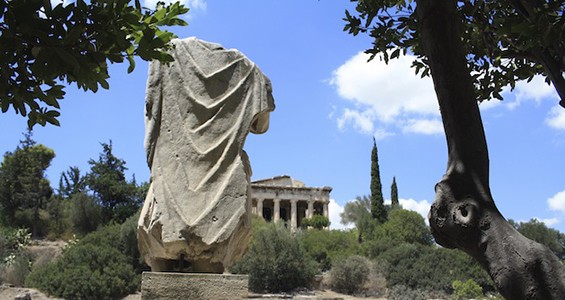 The Athenian Agora Excavations and Study Center are funded by the American School of Classical Studies at Athens, with major support from numerous foundations, institutions, and individuals. The work of excavating began in the 1930’s with the substantial support of John D. Rockefeller, who also funded the reconstruction of the Stoa of Attalos (1953-1956) to serve as the site museum with storage facilities. In recent years the work has been supported by the David and Lucile Packard Foundation and the Packard Humanities Institute. Other key supporters include the Samuel H. Kress Foundation, the Ford Foundation, the National Endowment for the Humanities (NEH), the Andrew W. Mellon Foundation, Princeton University, Stavros Niarchos Foundation, and Randolph-Macon College, among others. Millions of dollars have been provided in support of the excavation, restoration, research, and publication of
The Athenian Agora Excavations and Study Center are funded by the American School of Classical Studies at Athens, with major support from numerous foundations, institutions, and individuals. The work of excavating began in the 1930’s with the substantial support of John D. Rockefeller, who also funded the reconstruction of the Stoa of Attalos (1953-1956) to serve as the site museum with storage facilities. In recent years the work has been supported by the David and Lucile Packard Foundation and the Packard Humanities Institute. Other key supporters include the Samuel H. Kress Foundation, the Ford Foundation, the National Endowment for the Humanities (NEH), the Andrew W. Mellon Foundation, Princeton University, Stavros Niarchos Foundation, and Randolph-Macon College, among others. Millions of dollars have been provided in support of the excavation, restoration, research, and publication of
one of the most productive archaeological projects in the Mediterranean basin. In recent years the Packard Humanities Institute has also collaborated in a large project to digitize the vast collection of antiquities and archives stored in the Stoa of Attalos, a project supplemented by grants from the European Economic Area (EEA) and the Gladys Krieble Delmas Foundation.
T The American School of Classical Studies at Athens conducts a program for volunteers wishing to participate in the archaeological excavations of the Athenian Agora during the summer. Approximately thirty-five volunteers are chosen on the basis of academic qualifications and previous archaeological field experience. Undergraduate applications are welcome, although priority is given to graduate students preparing for professional careers in classical archaeology and those willing to work the entire season.
The American School of Classical Studies at Athens conducts a program for volunteers wishing to participate in the archaeological excavations of the Athenian Agora during the summer. Approximately thirty-five volunteers are chosen on the basis of academic qualifications and previous archaeological field experience. Undergraduate applications are welcome, although priority is given to graduate students preparing for professional careers in classical archaeology and those willing to work the entire season.
To learn more, click here.
American School of Classical Studies at Athens
321 Wall Street, Princeton, NJ 08540-1515
Email: programs@ascsa.org
Website: https://www.ascsa.edu.gr
The Agora Excavations Conservation Laboratory of the American School of Classical Studies at Athens is offering 2 Archaeological Conservation Internships for the summer 2024 excavation season.
Deadline: December 16, 2023
The Agora Excavations Conservation Laboratory of the American School of Classical Studies at Athens is offering two Archaeological Conservation Internships for the 2024 summer excavation season. The Conservation Laboratory functions as an integral part of the American School of Classical Studies at Athens’ Agora Excavations. Its aim is to support the excavations by providing services that contribute to the study and understanding of the site.
Interns will have an opportunity to treat freshly excavated archaeological finds and to participate in an active on-site conservation laboratory. Under the supervision and guidance of the Agora Conservation staff, interns will carry out general conservation duties including: examination and analysis of artifacts; documentation; cleaning; reconstruction; restoration; and photography of artifacts from the current excavation and from storage. In this way, interns will be able to work with a variety of materials including ceramics, stone, glass, copper alloys, iron, lead, bone and occasionally ivory and wood. An introduction to the re-treatment, preventive and long-term care of archaeological collections will also be provided.
Applicants must currently be enrolled in a graduate or equivalent conservation program, or they must have recently completed their studies in conservation. Successful candidates are required to obtain their own medical insurance for the duration of their internship. Successful candidates are also responsible for their travel arrangements to and from Athens, Greece and for arranging their own accommodation. A modest expense allowance, consisting of approximately 120 euros per week, and a housing allowance of 125 euros per week (up to 1000 euros for 8 weeks and upon submission of receipts) will be provided for each intern during their internship. Those persons who are already resident in their own accommodations in Athens are welcome to apply for the program and will receive the same expense allowance, although no refund for their housing is possible.
Internships may vary in length from 6 to 8 weeks and are undertaken from early June to early August. Applicants should indicate in their application their approximate preferred dates within this time frame.
Applicants will complete an online application by the deadline (December 16, 2023).
Internships may vary in length from 6 to 8 weeks and are undertaken from early June to early August. Applicants should indicate in their application their approximate preferred dates within this time frame on the online application.
Applications require two confidential letters of recommendation, which will be solicited through the application portal and must arrive by the deadline, 16 December 2023.
Applicants can expect to receive notification after 16 February 2024.
Maria Tziotziou
Head of Conservation
Email:maria@agathe.gr
Telephone: + 30 210 33 10 963
To learn more, click here
American School of Classical Studies at Athens
321 Wall Street, Princeton, NJ 08540-1515
Email: programs@ascsa.org
Website: https://www.ascsa.edu.gr
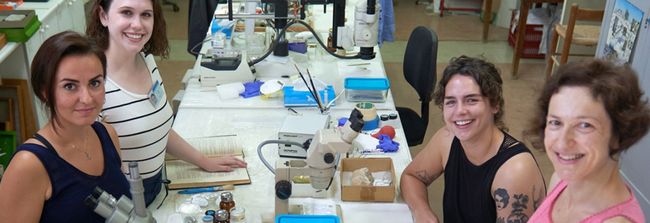
Date: June 23 to July 20, 2025 Application Deadline: April 1, 2025
Project syllabus: https://cyathens.org/wp-content/uploads/2024/11/ARCX321_DespotikoFieldSchool_Alexandridou_Summer2025Syllabus.pdf
 This summer course offers students the unique opportunity to actively participate in the excavation of one of the most prominent sanctuaries of the Aegean, situated on the uninhabited islet of Despotiko, west of Antiparos, in the center of the Cyclades. Systematically excavated since 2001, this sanctuary -dedicated to Apollo-, proved to be almost as rich as the well-known sanctuary on the sacred island of Delos in its architectural development and its dedications.
This summer course offers students the unique opportunity to actively participate in the excavation of one of the most prominent sanctuaries of the Aegean, situated on the uninhabited islet of Despotiko, west of Antiparos, in the center of the Cyclades. Systematically excavated since 2001, this sanctuary -dedicated to Apollo-, proved to be almost as rich as the well-known sanctuary on the sacred island of Delos in its architectural development and its dedications.
While unveiling the history and the different phases of ritual activity at this important Cycladic sanctuary, the participants will be introduced to archaeological fieldwork methods and theory. In particular, the excavation will focus on the exploration of a number of edifices not only within the sacred precinct, but also outside of it. An oval or apsidal building of the 8th century B.C., which represents the earliest construction of the site up to date, presents special interest. The interpretation of its character and function is crucial for reconstructing the earliest ritual practices at the site. The sanctuary attracted numerous votive dedications of various types. This gives students the opportunity to familiarize themselves with a variety of artifacts of different materials and types covering a wide chronological range extending from the Early Iron Age (9th-8th c. BC) to the Classical period.
See Vimeo video for information on Despotiko: Despotiko Video
Go to article on the archaeological excavation on Despotiko: Dig sheds light on island sanctuary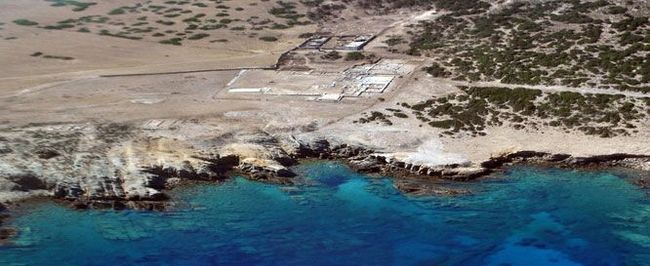 For the latest update on Despotiko go to: Archaeologists wrap-up phase one
For the latest update on Despotiko go to: Archaeologists wrap-up phase one
NOTE: This course starts on the island of Antiparos and ends on the island of Paros, Greece. Students should arrange to arrive in Athens the day before the start of the program, and to depart from Athens the day after the end of the program, in order to have time for their ferry connections between Athens and Antiparos/Paros.
College Year in Athens
1035 Cambridge Street-Suite 21E, Cambridge, MA 02141
Director: Alexandra Alexandridou
Email: info@cyathens.org
Website:https://cyathens.org
Dates: April 27 to June 7, 2025
Project website: https://www.cyi.ac.cy/index.php/keros-home.html
Join us for the 2025 season of excavations on Keros, the largest settlement and earliest maritime sanctuary of the Early Bronze Age (2800-2200 BC) in the Cyclades, Greece, and receive training in up-to-the minute micro-excavation techniques and digital recording technologies.
Background of excavations: Until recently, the island of Keros and the adjacent islet of Dhaskalio were the centre of a Bronze Age mystery. Looting in the 1950s and excavations in the 1960s revealed a strange site where broken Early Cycladic marble figurines and other prestige items had been found. Only in very recent years have we begun to understand the nature of this completely unique site.
In 2006-2008, excavations led by Prof Colin Renfrew of the University of Cambridge, defined the nature of the sanctuary and settlement, which feature large and imposing buildings. In 2012-2013, the Keros Island Survey helped us understand the occupation of the rest of the island of Keros and the 2015 survey on the nearby island of Naxos the nature of the wider maritime networks within which Keros was situated. Meanwhile, excavations on Dhaskalio in 2016-2018 revealed extensive monumental walling, an entrance stairway into the site, and extensive metal working.
Th
再保险
Current programme of research: In 2025 we begin a new, five-year programme of research, where we will use the latest micro-archaeological excavation techniques and all-digital recording, including dGPS, digital recording on tablets, lidar and digital photogrammetry. We aim to understand how all the different parts of the island were utilised in the Early Bronze Age and develop our understanding of the overall structure, function and date of the site.
The new programme will formally be a co-operative project between the Greek Ministry of Culture (Ephorate of Antiquities of Cyclades – EfAKyk) and the British School at Athens (BSA), with the close collaboration of The Cyprus Institute (CyI). The directors will be Michael Boyd (BSA/CyI), Evi Margaritis (CyI) and Demetris Athanasoulis (EfAKyk). Colin Renfrew has given his enthusiastic support to the project and will continue to advise us as Director Emeritus.
Where։ Keros, Cyclades, Greece [Download Google Earth kmz file]. All participants will be staying in rented, en suite accommodation at the project base on the nearby island of Kouphonisi.
Length of stay։ 27th April – 7th June 2025
The site can act as a time capsule and an island laboratory for the inception of urbanization in Europe. Due to its importance the project has been the focus of two documentaries (one in the National TV of Greece and one produced by the National Geographic) and various media. Here are some useful links:
https://www.youtube.com/watch?v=ZdQpvPnnFqo&t=3175s
https://www.youtube.com/watch?v=2JLdiQUp_MU
https://www.theguardian.com/artanddesign/2011/jun/10/archaeology-mystery-keros-island-greece
Dates: June 23 to August 1, 2025 Application Deadline: April 30, 2025
Project website: https://sites.lsa.umich.edu/pella/
Overview:
This is afive-year archaeological research project (2021-2025) focused on the site of Pella in northern Greece, which is exploring the lives of the city’s inhabitants during the Classical and Hellenistic periods (fifth to first centuries BCE). It is a direct collaboration between the Ephorate of Antiquities of Pella and the University of Michigan, in association with Aristotle University of Thessaloniki. This project represents a follow-on study to the Olynthos Project (now in its publication phase). The multi-scalar, multi-disciplinary research design and the field methods to be used at Pella are derived from those developed and successfully implemented by the team at Olynthos.
Project Goals
The Pella Urban Dynamics Project focuses on the roles and experience of non-elites as their community emerged as a major centre of the Greek world. Pella is an ideal context for such an investigation: previous archaeological work shows that an older city here underwent a radical expansion during the second half of the fourth century BCE, following the city’s designation as capital of the Macedonian kingdom (ca. 400 BCE) and the subsequent expansion of Macedonian culture.
The Project seeks:
交货
Research Design
At the community-wide and neighbourhood scales the Project aims to produce a comprehensive picture of the extent and layout of Pella at different times. A combination of geophysical survey and field survey are being used to define and sample the various neighbourhoods, characterising occupation and assessing the facilities available.
Geophysical Survey
Geophysical survey is being used to investigate the extent of the Hellenistic street grid and document city walls, ditches and other features. Ground penetrating radar, in particular, is being used in areas with multiple occupation phases, since the ‘slices’ through the ground at different depths that it provides offer the best chance of documenting change through time in the urban plan and in the size and layout of individual buildings. Magnetometry is also being used to highlight anomalies caused by industrial or domestic activities (e.g. respectively, kilns or large storage jars). Electrical resistance provides a supplement where a more detailed picture of individual features is required.
Field Survey
In addition to geophysical survey, field survey is helping to characterise neighbourhoods and document change through time. Previous work on the Hellenistic city centre traced an orthogonal street grid known to comprise insulae (blocks) 47m wide and varying in length between 110 and 152m. This grid is usually extrapolated to cover the entire area within the Hellenistic city walls, approximately 1.5 by 2.5 km. In many neighbourhoods, however, the density of occupation is unknown, and it is possible that not all of the space enclosed within the Hellenistic walls may have been built on.
Excavation
在
Archaeobotanical Study
The Project places a significant emphasis on studying the evidence for the uses made of different plants within the ancient city. To this end we are engaged in a substantial program of flotation and archaeobotanical analysis of soil samples collected during excavation. This work is carried out in collaboration with the Laboratory for Interdisciplinary Research in Archaeology and the PlantCult (CIRI-AUTH) laboratory at the Aristotle University of Thessaloniki.
Volunteer Information:
Volunteers are invited to apply to join the field team for the fourth field season of the project, from 23rd June to 1st August 2025. The project will be undertaking both field survey and excavation, and volunteers will have an opportunity to gain experience in field methods and protocols, archaeological documentation and finds identification. Participants will be accommodated in a shared room with shared bathroom. Accommodation will be approximately 15 Euros per night. Lunch and dinner will be approximately 18 Euros per day. Participants will purchase their own breakfasts. (Exact costs will be confirmed in April before applicants are asked for firm confirmation.)
If you are interested in participating, we ask that you be willing to join us for either the first or the second three weeks of the season (that is 23rd June to 12th July or 13th July to 1st of August), or both. Previous experience of archaeological field work is not essential, but it would be an advantage to have some experience in a related field (such as volunteering in a museum, course work in classical archaeology, art history, classics or anthropology).
If you are interested, please submit a brief letter of application stating why you would like to work on the project and how it would fit into your broader educational and/or career goals. Please also send a brief curriculum vitae listing relevant experience you may have (such as: course work in classical archaeology, archaeology, anthropology, art history, architectural history or a related discipline; previous archaeological or museum volunteering; experience of working on archaeological materials in a laboratory setting; skills such as data management, work with geographic information systems, etc.). Please also include the names of two referees (such as a lecturer or professor) who can be asked to vouch for your suitability to work as part of the project team. Please send this information to Professor Lisa Nevett at the University of Michigan (lcnevett@umich.edu).
Applications will be considered on a rolling basis until all places are filled, or until 30th April, whichever comes first.
Directors and Specialists
Dr. E. Bettina Tsigarida (Museum and Ephorate of Pella), Director
Dr. Stratos Nanoglou (Museum and Ephorate of Pella), Co-director
Professor Lisa Nevett (University of Michigan), Co-director
Dr. David Stone (University of Michigan), Co-director
Archaeobotany
Professor Soultana-Maria Valamoti (Aristotle University of Thessaloniki)
Ceramics
Dr. Nikos Akamatis (Academy of Athens)
Dr. Nadhira Hill (Randolph-Macon College)
Topography
Dr. Peter Knoop (University of Michigan)
Mr. Filippos Stefanou (Thessaloniki)
Dates: 4 weeks session: June 2 – June 28, 2025, 6 weeks session: June 2 – July 12, 2025
Application deadline: May 1, 2025 (earlier applications strongly recommended)
Project website: https://argilos.net/
Summer 2025 program can be found at https://argilos.net/inscription-au-stage/?lang=en/ Summer 2025 application can be found here
Project Description:
The Greek-Canadian archaeological excavations at Argilos is a vast collaboration project between the Ephoreia of Prehistoric and Classical Antiquities of Serres and the University of Montreal (under the auspices of the Canadian Institute in Greece). Directed by Zisis Bonias and Jacques Perreault, the mission numbers more then 40 students from various Canadian and European universities participating in the excavations every year, with assistance of qualified workers and scholars specialized in various areas of greek archaeology (architecture, pottery, numismatics, etc.).
The main objective of our research program is to better understand the establishment and organization of the Greek colonies on the northwestern coast of the Aegean sea by systematic excavation of Argilos. Some very important aspects of Greek colonization in the 7th century B.C. in this region have yet to be studied. The exceptional quality of the remains brought to light at Argilos up to now give us the opportunity to study fundamental aspects linked to the cultural relations between Greeks and Thracians and the development of colonial urbanism. How does a city, founded on a territory which was probably not hostile but surely very different from the homeland, take birth ? What is the rhythm of its development, what did condition it? What is the nature and how does the contacts and exchanges with the indigenous populations organize themselves ?
In order to answer these questions and others, the scholars working at Argilos have concentrated their efforts on three areas of the hill: along the sea coast, where excavations brought to light the earliest occupation levels of the town; on the southeast slope, where archaeologists excavated important public and domestic dwellings which give precious information about the architectural and urbanistic development of the city; and on the acropolis, where the buildings unearthed cover all the periods of the city’s existence, and notably those of the Hellenistic period, built after the destruction caused by Philip II in 357 B.C. [READ MORE]
Thanks to the work of a great team of students supervised by our staff of competent and energetic archaeologists, the 2024 study season was a great success! We worked on interesting structures and reconstructed several exceptional vases, helping us to better understand the urban and economic development of Argilos during the 6th, 5th and 4th centuries BC.
Amongst past discoveries is a large portico containing 12 shops. The portico is in a remarkable state of preservation, and our excavations have shown that it dates to the middle of the 6th century BC. In addition to this building, we have been excavating three other ones, also containing several rooms, some serving as shops, others as workshops and housing units.
2025 will be an excavation season. We will working in the following areas :
Also, as we do every summer, field trips will be organized to important archaeological sites and museums in the region (Pella, Vergina, the archaeological museums in Thessaloniki, Philippi, Abdera…). An optional three day visit of the beautiful island of Thasos is also organized.
Field Program
Work on the site and at the museum is supervised by experienced archaeologists.
Only 40 students will be accepted for this special season, which will combine three components:
Contact Information: Prof. Jacques Perreault, Centre d’études classiques, Université de Montréal, C.P. 6128, Succ. Centre-Ville Montréal, Québec H3C 3J7 Canada
Jacques.Y.Perreault@umontreal.ca
Phone: 514-343-6111 #41339
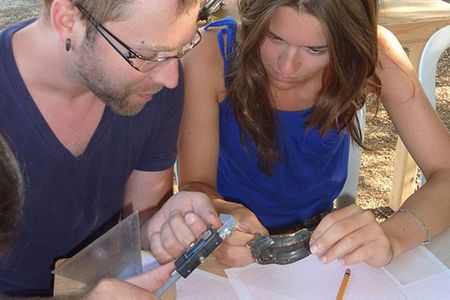
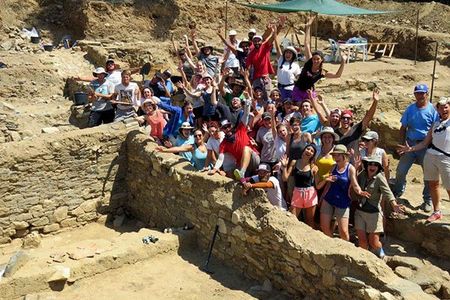
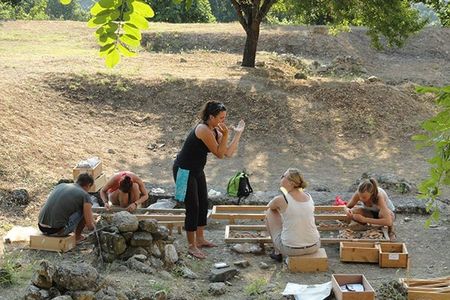
Dates: July 1-30, 2025
Project website: https://sites.google.com/site/fieldschoolastypalaia/home
Project brochure: https://drive.google.com/file/d/1um-yo_oyDJ2Ap0Ni70wdbuEdzJn2gCFa/view
APPLICATIONS FOR SUMMER 2025 FIELD SCHOOL NOW OPEN
This project is a bioarchaeological study of the human remains from ancient cemeteries on the small Greek island of Astypalaia. The earliest burials date from about 750 BC and the latest AD 100, so the cemeteries include burials from Late Geometric, Classical, Hellenistic and Roman contexts. Our work centres on the children’s cemetery which has more than 3400 burials. It is the largest ancient children’s cemetery in the world, which provides a unique opportunity for bioarchaeological research and training.
Each summer, the project runs a Field School for undergraduates and graduates. Students are trained in techniques for recording the burials, recovering the tiny bones and teeth of children, conservation and storage, identification and measurement, catalogue and database. They work in small groups under supervision and after initial classes they gain experience by following through all the steps for a number of burials. Applications are open now.
The project and field school are directed by Dr Simon Hillson, Professor of Bioarchaeology at University College London. Astypalaia’s cemeteries are being excavated by the Ephorate of Antiquities of the Dodecanese (Εφορεία Αρχαιοτήτων Δωδεκανήσου) and their archaeologist in charge is Mrs Haroula Fantaoutsaki.
Facebook page follow this link




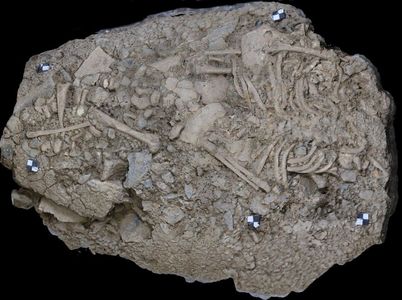
Over 150 students have taken part in Astypalaia Field School since 2010 and many of them have successfully gone on to graduate studies and fieldwork in archaeology and anthropology. We believe it provides a good basis of skills and knowledge and a chance to build confidence in a supportive group. Student reviews of the Field School are very positive.
Our laboratory is currently housed in an old school building. There are indoor areas for our tool cupboards, stores, macrophotography, computer-based activities and the project office. Work areas are mainly outdoors, under sunshades, because there is more space, better ventilation and our activities are dusty. The facility also has storage for the excavated pot burials before processing and for the skeletons once we have cleaned, conserved and recorded them.
Each student and staff member has their own work table and we supply all the equipment and materials that they will need for all stages of the work. This is where the boxed burials are opened and the skeleton is exposed in a small-scale tabletop excavation of the soil ball inside. The skeleton is mapped and photographed, often including 3D imaging. Then the remains are lifted, cleaned and conserved. They are identified, measured, catalogued, and stored in a system of plastic boxes. Records are kept with standard close-up photographs, a system of record sheets and a database. All this is coordinated and supported by the supervisors, who use the record sheets to keep track of students’ progress. After initial work in small groups, we hope that each student will complete work on about 5 burials working independently.
作为
Facebook page follow this link
The new field school in Roman Archaeology and Bioarchaeology takes place at Nikopoli, the renowned site that is being excavated by the Greek Ministry of Culture in preparation for inclusion in the UNESCO list of cultural heritage.
We offer two weeks of excavation, followed by one week of Bioarchaeology in the lab at the Museum. Our project is unique in Greece in offering this combination. All participants receive an official certificate of 150h, signed by the Greek authorities. We also offer credit.
We welcome applications from students of all levels, enrolled or graduated from Archaeology or an allied discipline course.
For more information, please visit our site at www.excavate.gr or email us at info@excavate.gr.
Director: Yiannis Papadimitriou <director@excavate.gr>
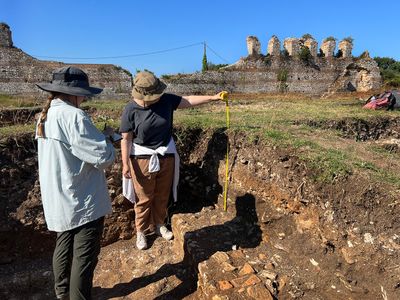
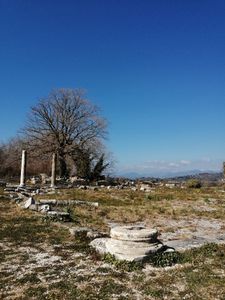
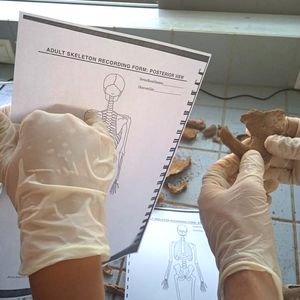
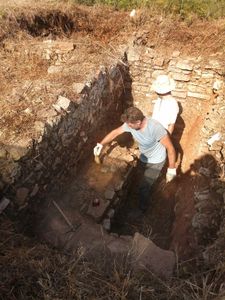
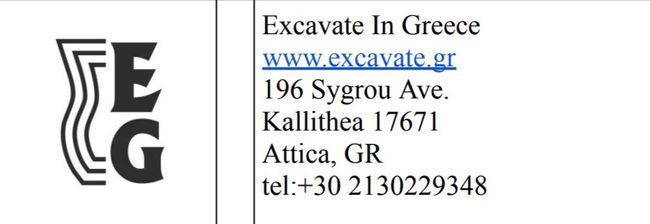
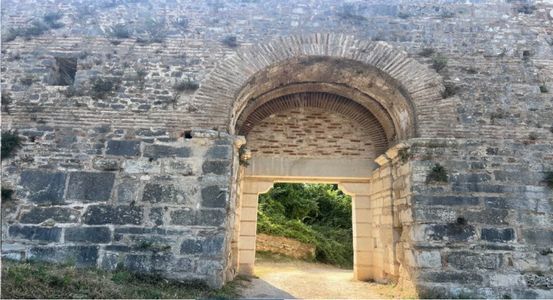
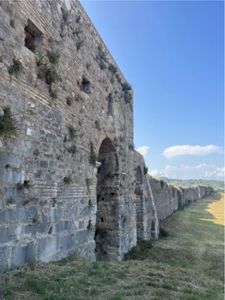
Dates: June 23 to August 2, 2025 Application deadline: May 31, 2025
Project website: https://sites.google.com/view/irelandcastlesincommunities/home
Project application: https://sites.google.com/view/irelandcastlesincommunities/apply
Project Directors: Niall Brady (ADCO), Andrew Bair (Harvard University), Rachel Brody (Boston College), and Daniel Cearley (Los Positas College).
Project Description:
Welcome to the ninth season of the Castles in Communities Archaeological Field School and Research Project (CIC for short), located in Ballintober village, County Roscommon, Ireland. Nestled in the island’s “hidden heartland,” CIC is designed to serve first-time diggers and more experienced volunteers alike. Imagine a small, quintessential Irish rural community lying in the shadow of a crumbling medieval castle’s ruins, surrounded as far as the eye can see by grazing animals and rolling hills of green grassy fields. At CIC, we pride ourselves in accepting learners of all ages and at different stages in life who want to study a castle, eat, and enjoy music in pubs, followed by a walk home and a warm peat fire.
Our project examines Ballintober Castle—built in the late 1200s by an Anglo-Norman lord—from past to present. One of our primary research goals is to inform our understanding of the past through broadening narratives about colonial encounters between Anglo-Normans and the indigenous Gaelic-Irish. Additionally, we prioritize collaboration with members of the Ballintober community to promote tourism and make the castle safe for visitors. Our project is not just an archaeological field school but an experience in cultural immersion.
Th
For more detailed information about the project, please see below:
Project Details:
All experience levels are welcome, including undergrads, grad students, and anyone who wants to do archaeology in Ireland. The project will run for six weeks and is an immersive experience, with the first three weeks providing the fundamentals of archaeological research and field methods, and the second half taking these principles further.
Below is a brief description of the training students will receive from our staff in the field:
Located centrally, the county of Roscommon is in the west of Ireland near Sligo and Galway. We encourage students on the weekends when we are not on field trips to take advantage of train and bus lines to explore. We also recommend that students take time before or after the project to discover Ireland, the UK, and continental Europe.
Project Size: 38-45 participants
Minimum Length of Stay for Volunteers: Six weeks
Room and Board Arrangements:
Program students will reside in several locations for the six-week duration. Most students will want to stay in Ballintober village in rented homes, which are exceptional experiences each year, especially for our students who want a full immersion in rural Irish life. In addition, we rent self-catering cottages at the manorial estate of Clonalis, located in the nearby town of Castlerea and just a 10-minute drive from the castle. Project fees include transportation to and from Clonalis each work day and transportation on all project field trips.
Students will be living and working with the people of Ballintober, and the food reflects this, as local Irish cooks prepare all weeknight project team meals. We provide groceries and fully stock houses for students to prepare breakfast and lunches. We are well prepared to welcome vegetarians, vegans and will strive to accommodate all diets.
Cost: $6200 for six weeks. The program fees do not include plane and related fares.
Academic Credit:
We do not offer credit courses. This program is for you if you do not need credits but want the experience. Each participant will receive a certificate upon completion of the program. Many colleges and universities allow you to exchange field school experience for credits; please check with your departmental undergrad advisor or academic dean. Courses will mirror standard offerings but not be for credit. For instance, in past years, when running through Foothill College, we have offered the following courses for credit: ANTH 12 Applied Anthropology (4 units), ANTH 52 Archaeological Field Methods (4 units), ANTH 67C Cultures of the World: British Isles (4 units), ANTH 51: Archaeological Survey (2 units), and ANTH 17L: Archaeology Laboratory (2 units).
Project photos: https://sites.google.com/view/irelandcastlesincommunities/media/slide-show
Watch the program videos! https://photos.app.goo.gl/gZoJypEGmVtxdS7U8 photos.app.goo.gl/x52DBTA6pfGFJqt69 https://photos.app.goo.gl/5J78nq21An4MhyW66 https://photos.app.goo.gl/9WdYX2f173N2jEqPA
The Galway Archaeological Field School provides students with hands-on experience of the archaeology and architecture of medieval Ireland.
Deadline: Rolling
Project website: https://gafs.ie/index.php/courses/
The Galway Archaeological Field School will offer one course in 2025 and transferable Academic Credit is available to all students. We aim to provide high quality tuition to all our students and this will be achieved through small class sizes, professional tuition and close on-site supervision. We are primarily an educational institution and so we design our courses and select our survey and excavation sites with one important thing in mind – the provision of first-class training opportunities for our students.
Due to circumstances beyond our control, we will not be excavating in Summer 2025 and so we will offer only one course – our two-week Castles, Cloisters and Churches course on medieval architecture and archaeology. Our course fees include tuition, accommodation (on a self-catering basis), access fees to historic sites and local transportation, so that additional expenses for our students are limited to transport to and from Galway and food for the duration of their stay.
Interested? Review the 2025 programme below, follow the links to read about the course we offer and then submit a no-obligation application form with your contact details and your course preference – we will then review your application and offer you a place if one is available. Alternatively, feel free to email us with any queries you may have.
OVERVIEW
WE OFFER OUR STUDENTS: • Exciting opportunities to study in a small, vibrant university city on the west coast of Ireland • Top-class field-based teaching led by an expert in Irish medieval archaeology and architecture • A choice of 2-week and 4-week courses which can be combined to create a longer experience • Academic Credit from one of Ireland’s top universities •Their own bedroom in a very comfortable apartment shared with other field-school students
About Galway Archaeological Field School
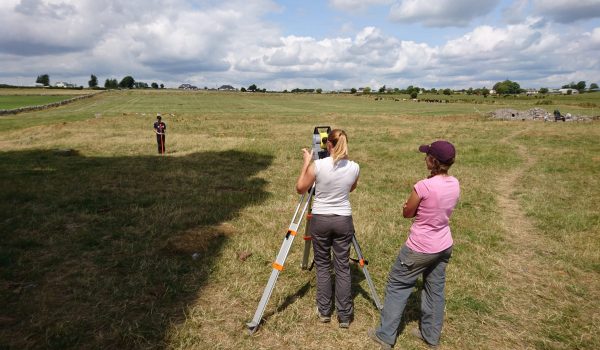 The Galway Archaeological Field School provides students with hands-on experience of the archaeology and architecture of medieval Ireland. We specialise in this field and seek to immerse our students in the wealth of medieval castles, churches and monasteries which lie scattered across the Irish landscape. We offer three courses: a two-week non-excavation course focused on the study of medieval architecture and two four-week excavation courses, one serving as an introduction to archaeological excavation and one offering experienced students further tuition in the various recording techniques used in archaeological excavation.
The Galway Archaeological Field School provides students with hands-on experience of the archaeology and architecture of medieval Ireland. We specialise in this field and seek to immerse our students in the wealth of medieval castles, churches and monasteries which lie scattered across the Irish landscape. We offer three courses: a two-week non-excavation course focused on the study of medieval architecture and two four-week excavation courses, one serving as an introduction to archaeological excavation and one offering experienced students further tuition in the various recording techniques used in archaeological excavation.
Th
At weekends, students have free time to explore the local towns and villages or to visit nearby Galway city, a vibrant, youthful university town with an enchanting array of summer festivals which attract visitors from all over the world. These festivals include the Galway Sessions (traditional and folk music), the Galway Film Festival, the Galway Arts Festival and the legendary Galway Races, so students have endless opportunities to engage with Irish culture at a variety of levels. Galway is easily accessible via public transport from the international airports at Dublin and Shannon and so the Galway Archaeological Field School is ideally placed to welcome students who seek to gain hands-on experience of archaeological fieldwork, to learn about medieval Ireland and to experience modern Ireland to the fullest possible extent.
Courses at Galway Archaeological Field School 2025
Course 1 Castles, Cloisters and Churches: The Architecture of Medieval Ireland
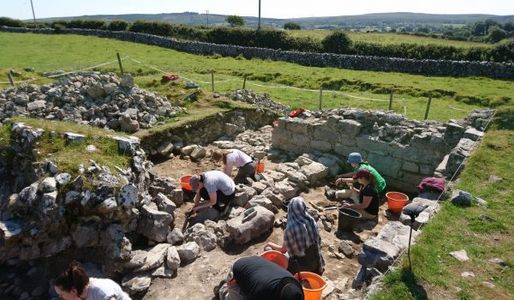
This two-week course will investigate the architecture and archaeology of the castles, churches and cloisters of medieval Ireland. Students will visit a wide variety of historic buildings and will learn to analyse, describe and record these structures using a series of key survey techniques. Beginning in the early medieval period, the course will examine a number of pre-Norman ecclesiastical sites before going on to explore the wealth of Anglo-Norman and Gaelic castles and monasteries which are found across the Irish landscape. This field-based module will provide students with a solid understanding the evolution of Irish medieval architecture and will also give them key transferrable skills in building analysis and survey.
Students who participate successfully in this course will learn to describe the evolution of Irish medieval architecture in general terms, discuss individual buildings during on-site visits, identify key phases in medieval buildings through examination of their fabric, produce an accurate plan of a simple medieval building to scale through on-site survey and discuss possible survey methodologies for larger medieval buildings. Course fees include tuition and self-catering accommodation, and we also provide free transportation to the sites under study.
Programme Details 2025
Session 1: 2 June – 13 June (2 weeks – 3 Semester Credits / 6 ECTS credits)
Session 4: 30 June – 11 July (2 weeks – 3 Semester Credits / 6 ECTS credits)
Course 2 Introduction to Archaeological Excavation
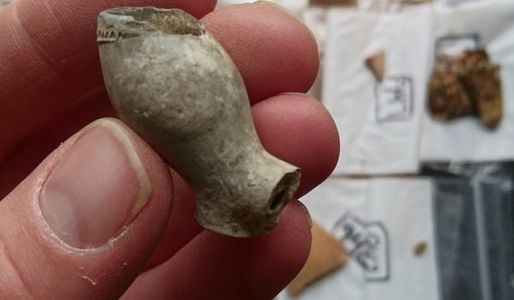 This four-week course will introduce students to the practicalities of archaeological excavation and provide them with hands-on experience of the key techniques they need to master to become proficient excavators. It is generally aimed towards undergraduate students of archaeology and anthropology, who usually take the course for credit, but the course is open to all and can be taken by anyone with an interest in archaeological fieldwork.
This four-week course will introduce students to the practicalities of archaeological excavation and provide them with hands-on experience of the key techniques they need to master to become proficient excavators. It is generally aimed towards undergraduate students of archaeology and anthropology, who usually take the course for credit, but the course is open to all and can be taken by anyone with an interest in archaeological fieldwork.
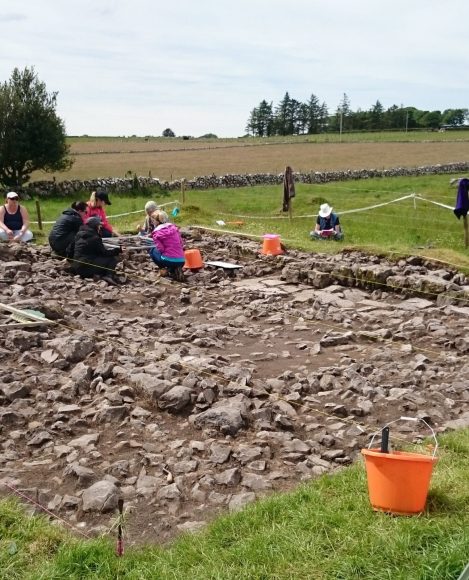 Students on this course will learn to excavate using a variety of tools but will also gain valuable experience of a range of on-site recording techniques which will generate a structured written record, a series of scaled drawings and an extensive photographic archive of the site under examination. They will be involved in the analysis of the stratigraphic evidence on the site and will also work with finds to ensure they are recorded correctly and stored safely. The course will have a particular emphasis on medieval archaeology and so the excavation site and the sites visited on field trips, which will include a series of castles, churches and monasteries, will be selected with this focus in mind. For the 2024 season, the course will be based upon an excavation at a medieval castle in Co Galway and so the students on the course will be part of our research programme which seeks to explore the archaeological evidence for settlement at late medieval castle sites in Ireland.
Students on this course will learn to excavate using a variety of tools but will also gain valuable experience of a range of on-site recording techniques which will generate a structured written record, a series of scaled drawings and an extensive photographic archive of the site under examination. They will be involved in the analysis of the stratigraphic evidence on the site and will also work with finds to ensure they are recorded correctly and stored safely. The course will have a particular emphasis on medieval archaeology and so the excavation site and the sites visited on field trips, which will include a series of castles, churches and monasteries, will be selected with this focus in mind. For the 2024 season, the course will be based upon an excavation at a medieval castle in Co Galway and so the students on the course will be part of our research programme which seeks to explore the archaeological evidence for settlement at late medieval castle sites in Ireland.
圣
Programme Details 2025
Session 2: This course will not run in 2025 Session 3: This course will not run in 2025
Course 3 Recording Methods in Archaeological Survey and Excavation
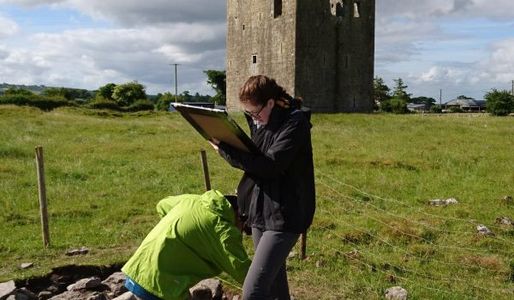 Th
Th
This course is open to students who have completed Course 2, or those who can show that they already have sufficient excavation experience from other archaeological sites. Students on this course will be involved in practical excavation but will also gain valuable experience of a range of on-site recording techniques and will, where possible, take leading roles in on-site tasks including photography, drawing to scale, stratigraphic interpretation and finds recording. They will also be expected to assist in tutoring novice students in basic excavation techniques and so will make considerable progress towards appointment as site supervisors in future years.
The course will have a particular emphasis on medieval archaeology and so the excavation site and the sites visited on field trips, which will include a series of castles, churches and monasteries, will be selected with this focus in mind. For the 2024 season, the course will be based upon an excavation at a medieval castle in Co Galway and so the students on the course will be part of our research programme which seeks to explore the archaeological evidence for settlement at late medieval castle sites in Ireland.
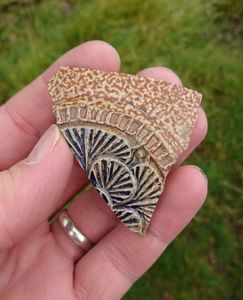 Students may choose to do this course in Session 3 and are free to combine it with Course 2 in Session 2 if they wish, as entry to the course is restricted to those with some excavation experience, whether gained though Course 2 at the Galway Archaeological Field School or on another archaeological site. Students taking two courses get a 10% discount on both course fees. Course fees include tuition and self-catering accommodation and we also provide free local transportation.
Students may choose to do this course in Session 3 and are free to combine it with Course 2 in Session 2 if they wish, as entry to the course is restricted to those with some excavation experience, whether gained though Course 2 at the Galway Archaeological Field School or on another archaeological site. Students taking two courses get a 10% discount on both course fees. Course fees include tuition and self-catering accommodation and we also provide free local transportation.
Programme Details 2025
Session 3: This course will not run in 2025
For further information, contact Dr Rory Sherlock, Director, Galway Archaeological Field School, Oughterard, Co. Galway.
Project website: https://bafs.ie/summer/ Application deadline: March 31, 2025.
Project flyer: https://bafs.ie/wp-content/uploads/2019/01/NEW-A5-WEB-BAFS-Flyer.pdf
OVERVIEW
Welcome to the Blackfriary Archaeology Field School. 2025 will be the fifteenth season of excavations at this site where we have been providing the highest standards of teaching and training since 2010.
Our goal is to continue delivering a wonderful experience to all interested students, visitors, lifelong learners and enthusiasts at the Black Friary. Already, so many have started their field careers or realised their dream of taking part in an excavation at this medieval friary in the heritage capital of Ireland. It’s our ambition to help as many people as possible experience the adventure that digging up the past has to offer, while being taught how to record it for future generations. Our location in Co. Meath means that you are perfectly placed to see the many wonderful heritage sites which bring our past to life in Ireland’s Ancient East. https://www.irelandsancienteast.com/
 The Blackfriary Archaeology Field School is part of the award-winning Blackfriary Community Heritage and Archaeology Project (BCHAP) in the town of Trim, County Meath, Ireland. Focusing on the buried remains of the 13th century AD/CE Dominican friary and associated graveyard, the field school is suitable for students from a wide range of backgrounds including archaeology, history, anthropology, and forensics – and for students looking for a unique study abroad experience. As participants in a public archaeology project, students are actively engaged with our outreach activities on site. They are also housed with families in Trim, allowing them to integrate wit
The Blackfriary Archaeology Field School is part of the award-winning Blackfriary Community Heritage and Archaeology Project (BCHAP) in the town of Trim, County Meath, Ireland. Focusing on the buried remains of the 13th century AD/CE Dominican friary and associated graveyard, the field school is suitable for students from a wide range of backgrounds including archaeology, history, anthropology, and forensics – and for students looking for a unique study abroad experience. As participants in a public archaeology project, students are actively engaged with our outreach activities on site. They are also housed with families in Trim, allowing them to integrate wit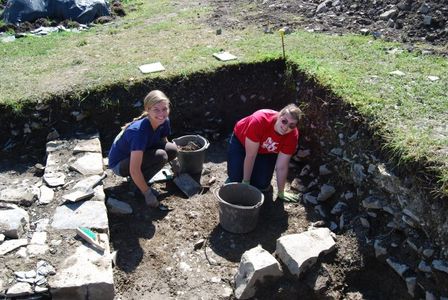 h the local community.
h the local community.
Location/Where are we
The Blackfriary site is situated in the Medieval town of Trim, County Meath which is the heritage capital of Ireland. Trim is in the heart of the Boyne Valley close to the World Heritage site at Brú na Bóinne (see https://www.irelandsancienteast.com/discover/stories/featured-stories/bru-na-boinne), where the 5000-year-old passage tombs of Knowth, Dowth and Newgrange are located . These significant sites, as well as the legendary Hill of Tara, the Hill of Slane and Mellifont abbey are also situated within the Boyne Valley and can be visited easily.
Just 45km North-west of Dublin, Trim is easily accessed from the country’s main airport. Being this close to Dublin means our students often spend their weekends travelling and sight-seeing in both Ireland, the UK and continental Europe. Flights from Dublin to cities such as London, Edinburgh, and Paris are an hour or two away and very affordable.
Trim is a small Irish town which retains many of its medieval features and is home to Irelands largest Anglo-Norman castle as well as other amazing remains. The Yellow Steeple, built as the bell tower of the Augustinian Priory was Ireland’s tallest building for over a hundred after it was built in the 15th century All amenities such as groceries, pharmacies, gift shops, bars and restaurants are available in the town.
See all of the wonderful things to do in the Boyne Valley here;
http://www.discoverboynevalley.ie/download-brochures-about-boyne-valley
About the project
We are a dedicated teaching and research field school, committed to providing the best training in archaeological field methods within a public archaeology/community archaeology framework. We make sure that everyone understands our reasons for researching and digging this exceptional site and is trained in all aspects of the excavation. Blackfriary is a community owned site, so by taking part in the ongoing re-imagining of this formerly unloved space, project participants are helping protect and preserve this hugely important part of the heritage of Trim into the future. For those who come to us it’s a wonderful chance to be immersed in Irish life and culture while forging lifelong friendships.
Blackfriary Archaeology Field School
We have been digging, teaching and researching at the Black Friary since 2010. The site is a 6-acre field (2.2 hectares) owned by the local authority. The fact that it is not our site and is in public ownership is very important to us. The Blackfriary community now stretches from Trim right around the world thanks to the hundreds of students and volunteers who have joined the dig and are helping to transform this site. Our excavations are carried out with the permission of the National Monuments Service, registered by the National Museum of Ireland.
From the very beginning of the teaching and research excavations a community project was set up – the Blackfriary Community Heritage and Archaeology Project, or BCHAP. This provides the ethical framework within which the excavations are conducted. To read more about this, see the Community page. To read more about our research objectives see the Research page.
The Excavations
Excavations began in 2010 under the direction of Finola O’Carroll, Principal Investigator. In 2012 project Bioarchaeologist Dr. Rachel Scott began exploring the burial record at the site. We are excavating the remains of a Medieval Dominican Friary to analyse how the changing patterns of its patronage and use are interwoven with the known history of the town. The friary consisted of a large complex of buildings set around two internal courts or cloisters with a church forming the southern side. The cemetery lies south of the church and burials from both church and cemetery have been excavated to date. Excavations began within the church, in the area known as the crossing which marks the junction between the chancel (where the religious community sat) and the nave (where the laity worshipped).
To date we have expanded our dig to explore part of the south aisle of the church, the cloister, the domestic ranges, the cemetery and the boundary between the town and the friary precinct. Every year we decide which areas to focus on, informed both by our research objectives and by what has been learned from previous seasons. This process is always discussed with students, so they can understand how the research informs the ongoing excavations. As all participants receive training in post-excavation work, the logic and purpose of the detailed record keeping in the field becomes clear to them, and the significance of this stage of the work is highlighted.
Dr. Scott’s research into the human remains excavated from within the church and from the associated graveyard continue to inform us about the lives and state of health of the people of Trim in those centuries. We now know that the graveyard had a long history of use. From the foundation of the friary in the mid-13th century to the mid-16th century it was a cemetery for the people of Trim; in times of political and religious upheaval families continued to choose to bury their dead there after the closure of the friary by Henry VIII. After this, it continued in use as a burial place for unbaptised infants – a Cillín or children’s cemetery, possibly up until the early 20th century, which, until these excavations was not widely realised. This longevity of use is illustrating the importance people attached to their final resting place during times of religious persecution and changing identities.
“The Blackfriary Archaeology Field School is everything a Field School should be–an excellent educational experience for students, a contributor to archaeological knowledge, and a positive force in the community. Blackfriary is one of the most publicly engaged archaeological projects I’ve ever had the pleasure of being involved with, and their beneficial influence on the surrounding area clearly shows. All of the professionals, students, and community members involved with the field school put their heart and soul into the work, and that made my experience there as a student incredibly enjoyable and valuable for honing my professional skills. I’m so grateful to have had the experience.” Jessica Skinner Student 2016
This course will be available to students in June 2025. Students will be introduced to excavation, post-excavation and survey methods. The course is divided between excavation within the friary/friary precinct, post-excavation, recording and survey. Each student will typically spend one week on each element. The excavation, post-excavation and survey sections will be directed and supervised by archaeologists, Finola O’Carroll, Mark McConnon and Laura Corrway.
The objective of this course is to train students in setting out a cutting and tying it to the site grid, the use of various tools, methods of excavation, feature recognition, recording using feature sheets, photography, planning and survey. All students take part in post-excavation processing, including the formation of the written record. The research strategy and previous results which inform the overall excavation plan will be discussed with students, so they can set their work in the overall context of the research framework. Field trips and lectures will introduce the student to the wider landscape and historical context of the Black Friary, and the town of Trim. This course is an accredited program from Dundalk Institute of Technology (https://courses.dkit.ie/index.cfm/page/course/courseId/1321).
At the end of the four-week course students will:
Students will be introduced to excavation, post-excavation, survey and bioarchaeology methods. The course is divided between excavation and survey within the friary/friary precinct and post-excavation processing and human skeletal analysis in the on-site lab. Each student will typically spend one week on each element. The excavation, post-excavation and survey sections will be directed and supervised by archaeologists Finola O’Carroll, Mark McConnon and Laura Corrway. The bioarchaeology section of the course is directed by Dr. Rachel Scott.
The objective of the first module of this course is to train students in methods of excavation including feature excavation and recording, the use of various tools, setting out an excavation unit, photography of features, archaeological drawing and survey. The objective of the second module is to train students in post-excavation processes including the washing and cataloguing of finds and samples and the analysis of the human skeletal collection excavated from the site.
The research strategy and previous results which inform the overall excavation plan will be discussed with students, so they can set their work in the overall context of the research framework. Field trips and lectures will introduce the student to the wider landscape and historical context of the Black Friary, and the town of Trim. This course is an accredited program from Dundalk Institute of Technology (https://courses.dkit.ie/index.cfm/page/course/courseId/8609).
Note that previous study of human osteology is not required.
At the end of the course students will:
This course will be available to students in June 2025. Students will be introduced to excavation, post-excavation and survey methods. The course is divided between excavation within the friary/friary precinct and post-excavation methods. Each student will typically spend one week on each element. The excavation, post-excavation and survey sections will be directed and supervised by archaeologists, Finola O’Carroll, Mark McConnon and Laura Corrway.
The objective of this course is to train students in setting out a cutting and tying it to the site grid, the use of various tools, methods of excavation, feature recognition, recording using feature sheets, photography, planning and survey. All students take part in post-excavation processing, including the formation of the written record. The research strategy and previous results which inform the overall excavation plan will be discussed with students, so they can set their work in the overall context of the research framework. Field trips and lectures will introduce the student to the wider landscape and historical context of the Black Friary, and the town of Trim.
At the end of the four-week course students will:
BLACKFRIARY ARCHAEOLOGY FIELD SCHOOL DIRECTOR: Finola O’Carroll <finola.ocarroll@bafs.ie>
Project Bioarchaeologist and Principal Investigator: Dr. Rachel E. Scott
Contact: info@bafs.ie
How to Apply
Download an application form here: BAFS Student Application Form and send your completed form along with two letters of recommendation to info@bafs.ie
Alternatively, contact us for an application form at info@bafs.ie.
Applications are opened until March 31st 2025.

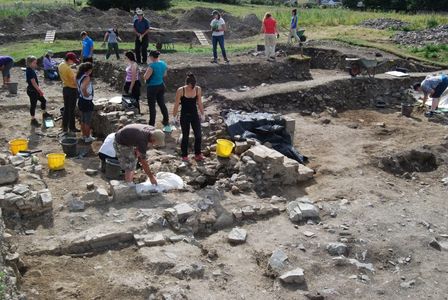
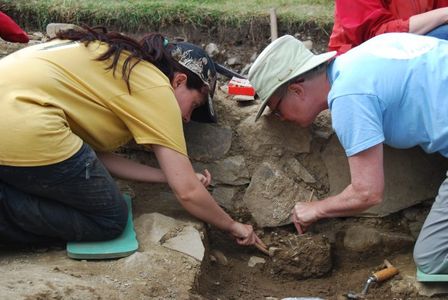
Website https://caherconnell.com/archaeology/
Apply Now! (and also see the scholarship competition below)
We are now accepting bookings for our fully accredited 2024 Field Schools here in the heart of the Burren.
For further information please contact us: Tel. +353 65 7089999 or Email info@caherconnell.com

We have two, four and six week courses that facilitate all levels of experience.
In partnership with theUniversity of Galway, we provide unforgettable archaeological experiences within the unique Burren region. Field schools are led byDr. Michelle Comber, a leader in archaeological education. This is complemented by a cultural element, which sees students interact with the local people daily. The site is also home to three stone cahers (ring forts), a probable Late Bronze Age burial mound, an ancient field system, two Bronze Age boulder burials, ancient dwelling sites and a prehistoric house.
All inclusive–we organise accommodation, meals, daily transport, on-site lectures and daily tuition. You just have to enjoy the experience, come along and join the team!
6 Week Combined Course: SS103/SS110/SS112 – (18 ECTS or 9US Credit Hours) 6 Weeks
Monday 3rd June – Friday 12th July 2024
4 Week Combined Course:SS103/SS110- (12 ECTS or 6US Credit Hours) 4 Weeks
Monday 3rd June – Friday 28th June 2024
Monday 17th June – Friday 12th July 2024
Introduction to Archaeological Excavation:SS103-(6ECTS or 3US Credit Hours) 2 Weeks
Monday 3rd June – Friday 14th June 2024
Monday 17th June – Friday 28th June 2024
Monday 1st July – Friday 12th July 2024
Intermediate Archaeological Excavation:SS110-(6ECTS or 3US Credit Hours) 2 Weeks
Monday 3rd June – Friday 14th June 2024
Monday 17th June – Friday 28th June 2024
Monday 1st July – Friday 12th July 2024
Information about the 2024 Scholarship programme for students is available HERE
Your time here will see you work with some of Ireland’s best archaeologists during the day and some of Ireland’s finest conversationalists at night!
The Caherconnell Archaeology field school experience is one which will not be soon forgotten and will allow students to experience the very best of Irish archaeology and culture all at once.
If you want to learn the skills of archaeological fieldwork in a fun yet professional manner – where academic credit is available –Caherconnell Archaeology Field School is the only place for you.
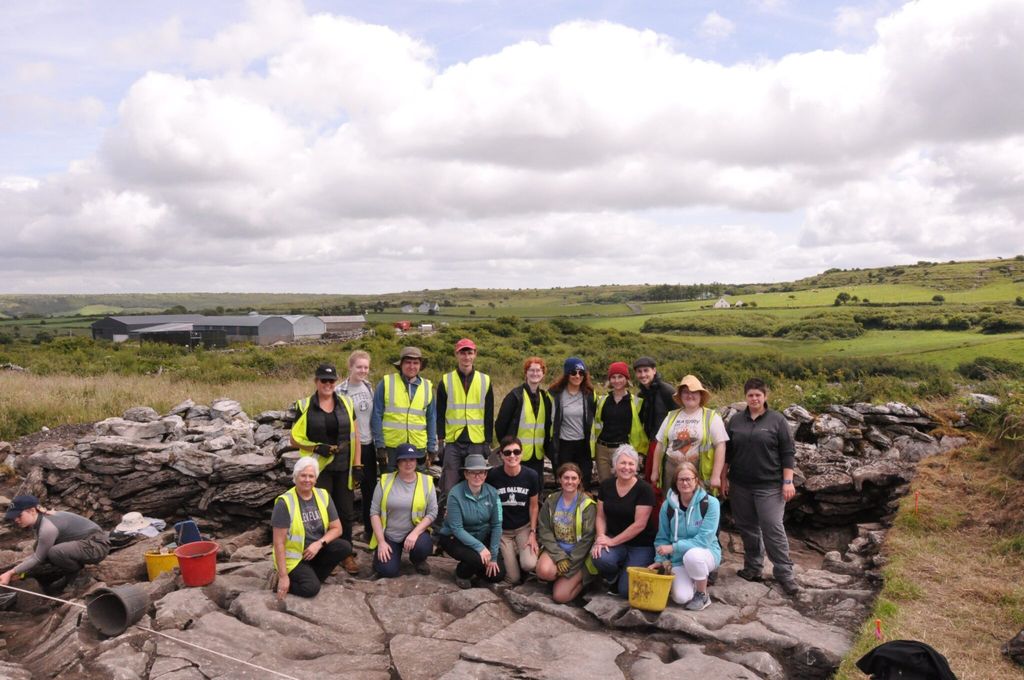
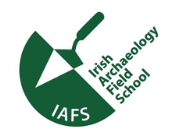 We are Ireland’s leading provider of accredited, field-based archaeological research and training programs. The ethos of the school is to provide an opportunity for students of archaeology and anthropology to experience at first hand the excitement of archaeological excavation in a teaching environment.
We are Ireland’s leading provider of accredited, field-based archaeological research and training programs. The ethos of the school is to provide an opportunity for students of archaeology and anthropology to experience at first hand the excitement of archaeological excavation in a teaching environment.
Our archaeological and heritage programs include research projects in a number of locations in Ireland, including in Co. Wexford and Co. Offaly (with satellite schools frequently undertaken elsewhere). We provide credited and uncredited programs (and internships) for novice and experienced students, and also specialise in the preparation of purpose-built faculty led programs incorporating excavation, historical research, remote sensing, non-invasive survey, ground investigation, landscape assessment etc.
Whilst our programs are excavation-centered and aimed primarily at students of archaeology, anthropology and history, courses are open to all, and are guaranteed to give you an enriching and thoroughly worthwhile study abroad adventure.
2025 Programs
We provide a wide range of expert-led research-focused courses designed to introduce students to practical archaeological field methods, and to build and expand on knowledge and experience gained in the classroom. Book a field school here.
Our marquee archaeological project, Digging the Lost Town of Carrig, takes place at the Carrick archaeological site, in the Irish National Heritage Park (INHP), Wexford. The project was founded in January of 2018 by the IAFS and INHP and focuses on the Carrick ringwork (SMR WX037-028002-), one of the most historically significant, but lesser known, medieval sites in Ireland. Carrick, founded in the winter of 1169 by Robert FitzStephen, was the first Anglo-Norman stronghold in the country being constructed the year before the main Anglo-Norman landing party at Baginbun. A stone castle, medieval borough and deerpark developed close to (or on) the site of the ringwork in the 13th century. Our project aims to establish Carrick’s rightful importance to the medieval histories of Co. Wexford, Ireland and Britain.
In June 2021 the Irish Archaeology Field School (IAFS) will launch a major next archaeological research project at the site of St Aidan’s Monastery, Ferns, Co. Wexford (WX015-003004-, WX015-003031-, WX015-003032-, WX015-003033-). The project, established as a partnership between the IAFS, Wexford County Council and the local community, aims to assess one of the most historically significant, but hitherto relatively unassessed, Early Medieval sites in southeast Ireland. The St Aidan’s Monastery project is centred on a major research excavation of both the 7th century monastery and a latter 12th century Augustinian Abbey, which hopes to draw the site into the town of Ferns as a ‘key heritage attraction’, in the process providing added economic and amenity value to the local community.
SEE ALSO:
Monastic Midlands Archaeology Field School https://iafs.ie/monastic-midlands-summer/
Forensic Anthropology Field School: Dead Men DO Tell Tales! https://iafs.ie/forensic-anthropology/
A variety of field school options are available for summer 2024. Details can be found here
Season Dates: vary
Project website: https://achill-fieldschool.com/
Project video can be seen here
Details of 2024 courses available at Achill Archaeological Field School have been revealed, and applications are now open!
For 2024 we will be hosting a two-week accredited course on Archaeological Field Studies, offering 3 Semester Credits (6 ECTS credits) to undergraduate and graduate students. We also have a four-week course offering the same Archaeological Field Studies module along with a Data Analysis module, providing a combined total of 6 Semester Credits (12 ECTS credits). And our six-week course includes the Archaeological Field Studies and Data Analysis modules plus ‘An Introduction to the Archaeology of Ireland’, offering a total of 9 Semester Credits (18 ECTS credits).
View 2024 Accredited Courses in Archaeology
Along with tuition and field work associated with these modules, we offer optional day trips to significant sites of archaeological interest, and an evening lecture series with guest speakers offering a range of expertise and insight into various aspects of archaeology in Ireland.
For anyone interested in archaeology we have a one-week Introduction to Archaeology course running from the 5th – 9th August, while for experienced students looking to make a career in archaeological fieldwork we offer a very popular Trainee Supervisor course that runs the full eight weeks of our 2024 season.
For 2024 the focus of our fieldwork with be excavations of two drystone dwellings and a shell midden at Caraun Point on the northern coast of Achill. Previous investigations in 2018 and 2019 recovered a quantity of artefacts that included glass and pottery, along with animal bone and shellfish remains. Analysis of these objects give us an insight into the livelihood and diet of the people who lived here. One unexpected discovery was the presence of a probable Early-Medieval ringfort immediately to the west of our excavation. Habitation deposits associated with this site were evident beneath the post-medieval houses and some artefacts of 8th to 10th century date were recovered. The 2024 dig will seek to build on these discoveries and improve our understanding of this site, which is under threat from coastal erosion.
Read more about Caruan Point Archaeological Dig Site
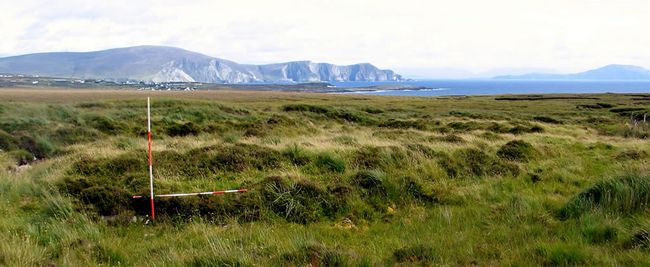

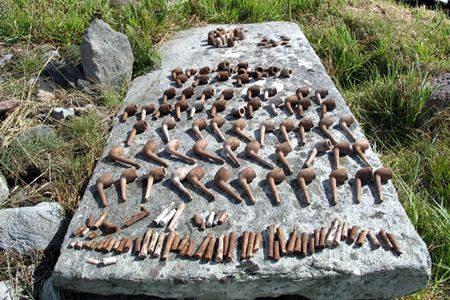


The ancient city of Hippos (Sussita) of the Decapolis is located on a hill, 2 km. east of the Sea of Galilee. It is one of the most exciting ancient cities of the Holy Land, continuously excavated by our team since 2000.
The project operates under the auspices of the Zinman Institute of Archaeology at the University of Haifa and partners with the German Protestant Institute of Archaeology and ASOR.
Project dates: July 13 to July 31, 2025
Project website: https://www.dighippos.com/join
Project flyer with details: https://www.dighippos.com/_files/ugd/2f636a_ac57b5ab7f7c4951a3551b60c58767d6.pdf
Apply now: https://docs.google.com/forms/d/1EijCa0hjsoBtyT-12z3tP20sVzeZC0wAzibTDHAS-hQ/
Full information about the site, the research plans and the field school (and application) can be found at this link (with some details below): http://telshimronexcavations.com
Date: June 22 to August 3, 2024 POSTPONED
Project blog site: https://www.telshimronexcavations.com/blog/2022/10/24/tel-shimron-a-city-state-in-the-jezreel-valley
Project video: https://player.vimeo.com/video/741617141?h=e8590ede19&app_id=122963
Join us for the sixth field season at Tel Shimron, a site perched high above the Jezreel Valley on the Nazareth Ridge in Israel with a commanding view of Mount Carmel to the southwest. Occupied for millennia, Shimron saw the rise of ancient Israel, Jewish Galilee, Rabbinic Judaism, Christianity, and Islam.
Come with us to discover the past and learn how to reach across the cultural divide to the world of the ancients.
In 2024, join us as we dig a Canaanite acropolis, Iron Age administrative buildings, and a Hellenistic farmstead. Uncover daily life in the ancient world. It took hundreds of generations to create the site of Tel Shimron; help us to recover their stories.
Directors: Daniel M. Master (Wheaton College, https://www.wheaton.edu/academics/faculty/daniel-master/) and Mario A.S. Martin (University of Innsbruck, https://uibk.academia.edu/MarioMartin)
E-mail: telshimronexcavations@gmail.com
Photos from https://www.telshimronexcavations.com/2017-photo-gallery
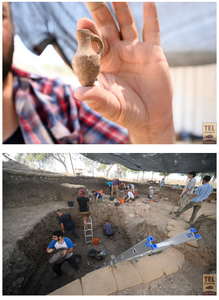
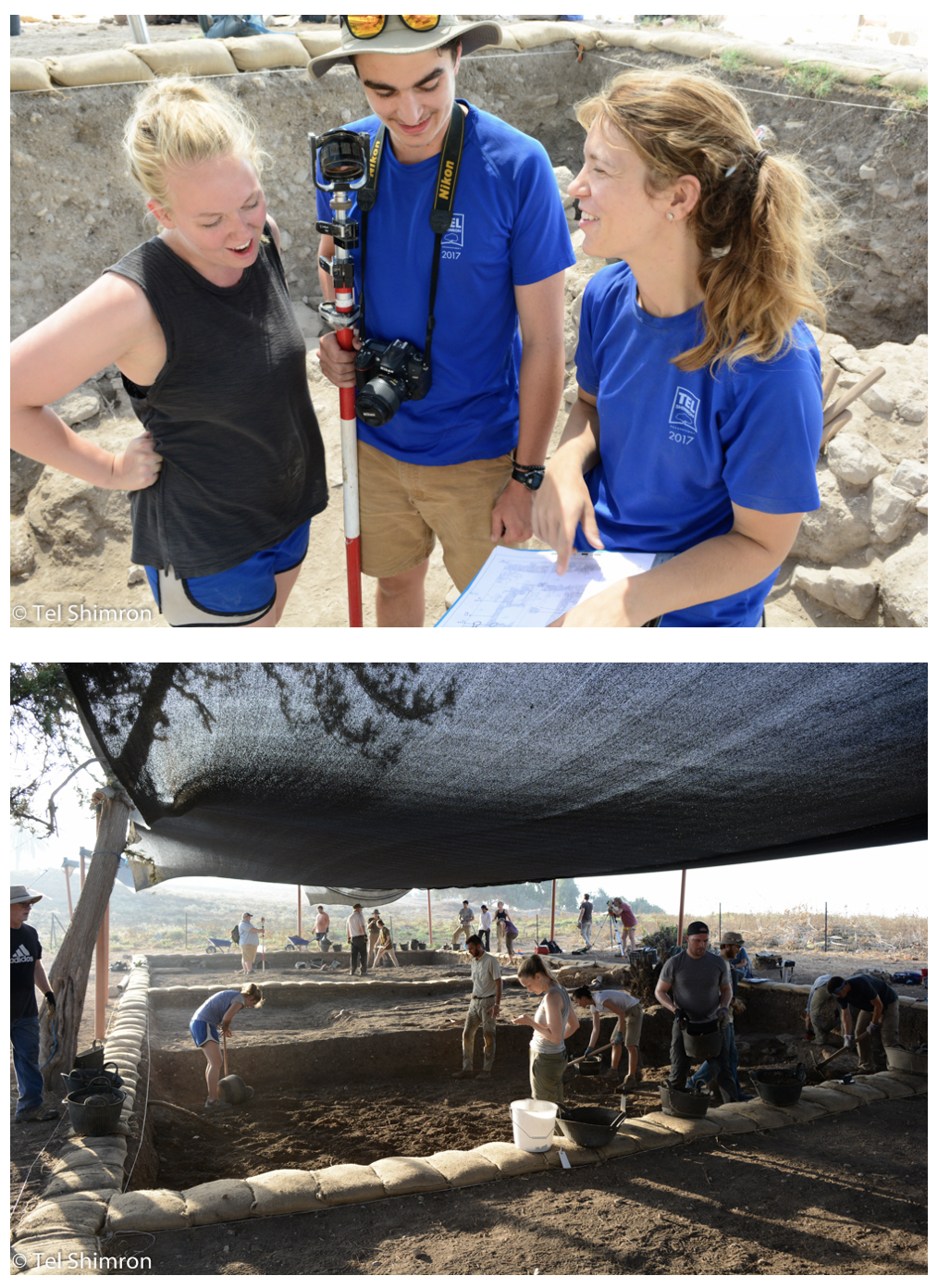






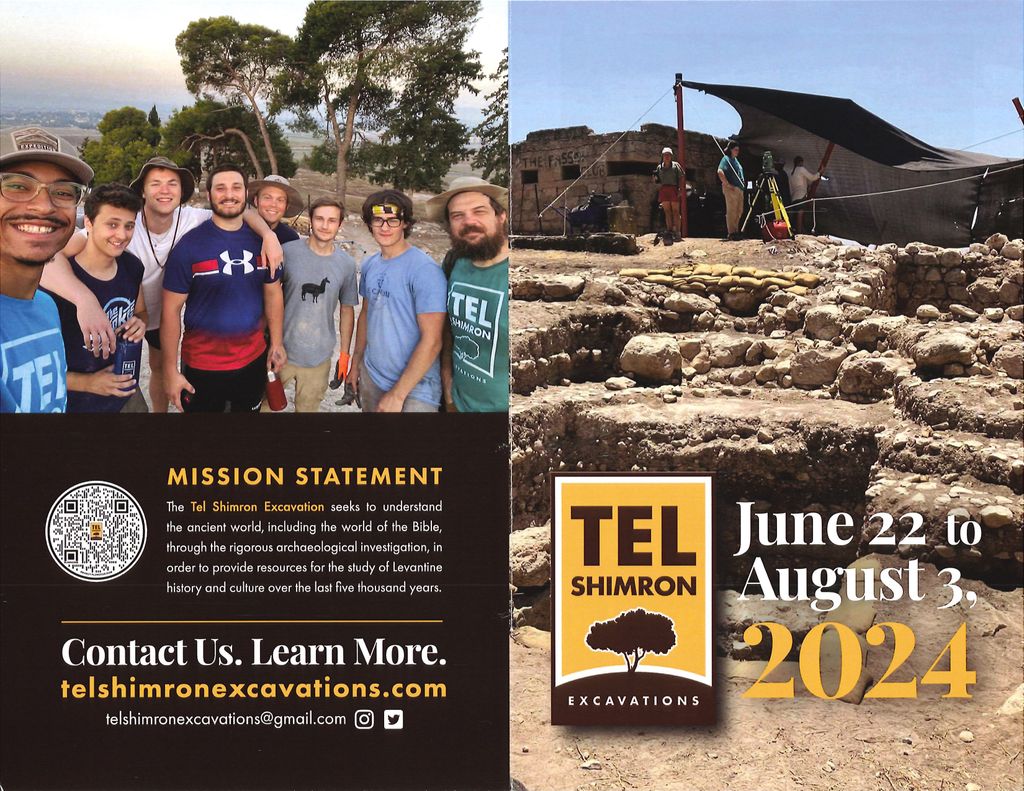

Dates: May 25, 2025 to June 21, 2025
Project website: https://imperoproject.com/
Project flyer: https://www.archaeological.org/wp-content/uploads/2024/10/Flyer-2025.pdf
Project videos: https://imperoproject.com/video-gallery/
Eighth Field School at Monteverdi, Summer 2025
DATES: May 25 – June 21, 2025
The Call for the 2025 Monteverdi Archaeological Field School is now open!!!
The field school excavations focus on the remains of the Etruscan sanctuary and Republican village of Podere Cannicci, and on the deserted Medieval village of Castellaraccio di Monteverdi, along with the middle valley of the Ombrone river. These sites represent a unique occasion to investigate economies in transition and settlement patterns in the territory of Paganico.
The Field School is aimed at students, early career scholars, and those passionate about archaeology, classics, art history, anthropology, and cultural heritage management.
Click here for a full bibliography on the research at Monteverdi!
No prior experience is required.
The excavations are carried out by members of the University at Buffalo – SUNY in collaboration with the Department of Anthropology at Michigan State University, and the Associazione Archeologica Odysseus.
The Field School is a fundamental introduction to stratigraphic excavation methods and to studies of excavated artifacts. Subjects include excavation methods and their application, analysis of built structures and archaeological features, context analysis, finds handling and recording, and studies of ceramic, glass, metal, bone, and numismatic material.
The Field School is located near the modern town of Paganico (Grosseto, IT). It is set in the breath-taking middle valley of the Ombrone river close to Montalcino, Siena, and Grosseto.
Food is provided during the workdays of the field school, and it is prepared by the staff of the estate of Monteverdi. We try our best to accommodate dietary requirements, and we can offer vegan, vegetarian, and gluten-free meals. However, meals are based on Tuscan and Mediterranean cuisine, and all participants must be aware of this. Occasionally, dinner events may take place at the estate, including barbecues or pizza, or at restaurants. Events outside the program are not included in the fees.
Meals include:
FEES
The fee per participant is 4,250€ (EUR) to be paid upon acceptance into the program by March 31, 2025.
Previous Field School participants are automatically granted a discount, and their fee is 3,850€ (EUR). The payment will be wired to Associazione Archeologica Odysseus, Italy.
For those committing to the field school by paying the fees by December 30, 2024, the costs are reduced to 4,000€ (EUR) for first-time participants and to 3,600€ (EUR) for returning students. Make sure to reserve your spot early to secure the best price!
The payment is not refundable
The total fee includes:
The fee does not include:
APPLY FOR THE PROGRAM
To be considered for the program, please prepare :
1 – Cover letter of no more than 1 page, detailing previous experiences (if any), and your interest in joining the Field School (not necessary for returning students)
2 – Updated resume/CV
3 – Any dietary restrictions – we can accommodate vegan, vegetarian, and lactose-free meals
Email all the necessary documents to Prof. Alessandro Sebastiani as424@buffalo.edu
The deadline to obtain the early call discount is December 1, 2024. Successful applicants will be notified within 10 days to secure their spots.
The general deadline for submitting all required documents is December 31, 2024. Successful applicants will be notified during the week of January 5–11, 2025.
Upon acceptance into the program, applicants must sign a waiver and submit their payment by March 31, 2025.
INTRODUCTION:
The chosen area of investigation lies in southern Tuscany, in the modern commune of Civitella Paganico (Province of Grosseto). Here, the remains of a large late Etruscan and Republican site are accompanied by the ruins of a small medieval castle. Both the settlements are set along with the valley of the river Ombrone, midway along its course. The selected area of investigation has been chosen because it includes a composite environmental and infrastructural network across the lower and middle valley of the river Ombrone, and a large portion of the Roman ager Rusellanus. It also includes the previously investigated region of Alberese along the Tyrrhenian Sea coastline that has been the focus of a Marie Curie IE Fellowship (project ALBTUSMED II) at the University of Sheffield. In addition, as part of the investigations, the research will aim to understand the relationships between different kinds of settlements (maritime, rural, riverine and urban) and the surrounding landscape.
Project Description:
Th
DIRECTOR:
Prof. Alessandro Sebastiani – University at Buffalo – SUNY – Principal Investigator and Scientific Director (Google Scholar, Academia.edu and Researchgate.net)
Learn more about the Field School from previous students. Check the video below, or go to our video-gallery to see some of our activities!









Program Dates: The academic program will resume in the summer of 2025. Registrations will open soon!
A 4-WEEK SESSION IN SUMMER 2025. The Field School Montaione in Archaeology, Survey and Material Culture is focused on the archaeological investigation of a 1st – 5th century AD Roman Thermae copmplex and welcomes students in anthropology, archeology, classic history, historical topography and allied disciplines at undergraduate and graduate levels. The Field School has no formal prerequisites.
Field School in Montaione in Archaeology, Survey and Material Culture is a program offered by the Municipality of Montaione (Florence) in collaboration with the Italian Ministry of Cultural Heritage, Archaeological Association of the Val D’Elsa Fiorentina and Associazione Culturale Cetra, powered by IRLAB aimed at training students in archaeological, anthropological, historic and topographic methods and topics. It is an outstanding opportunity for students to gain knowledge in stratigraphy investigation from an immersive field course in the thermae area of a wider rural complex belonging to the Roman Republic.
Program & Dates Summer 2025 (to be announced; contact
The school is designed to provide all attendees with an advanced knowledge of applied stratigraphy method, topographic surveys and analysis, GIS and photogrammetry, material culture and the study of the relationships between the site and the not yet discovered village it belonged to.
Students will gain experiential skills in on-site recordkeeping, documentation, and laboratory practice, including data management and the interpretation of archaeological evidence. Students can expect to participate in weekly lectures and labs will several experts, as well as take visits to local museums and sites with Montaione staff.
The official language of the Summer School is English and no knowledge of Italian is required.
Application link: https://www.irlabnp.org/montaione-application/
Project website: https://www.irlabnp.org/field-school-montaione-in-archaeology-survey-and-material-culture/
Download the 2024 program brochure here https://irlabnp.org/wp-content/uploads/2024/01/Montaione-Flyer-2024.pdf
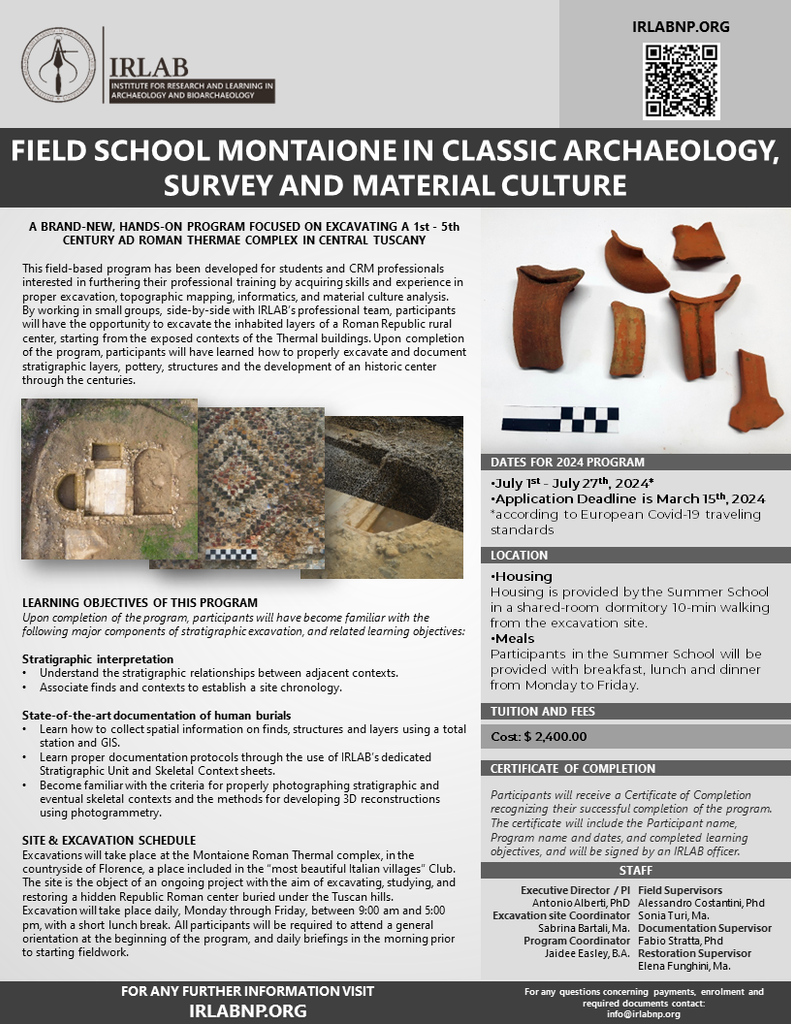
Project website: https://www.sangeministudies.info/program-summary
Study Conservation & Restoration in Italy
Summer 2025 – June 2 thru August 8
San Gemini Preservation Studies is a summer field school, now in its 26th year, that organizes lectures, research, fieldwork, workshops and field trips in the disciplines of historic preservation, restoration and conservation. It is located in Central Italy in the city of San Gemini. The deadline for applications is March 15, 2025.
These courses focus on the study of: historic buildings preservation, traditional forms of painting, conservation of archaeological ceramics, the restoration of books and paper in archival material. The various field projects include: documentation and restoration of medieval public buildings in San Gemini, the archaeological excavation in the ancient Roman city of Carsulae, as well as conservation work on the local historic archives. The SGPS program is a collaboration between scholars from various universities and local preservation groups, fostering a multidisciplinary approach to historic preservation. All academic activities are held in English.
In recent years, there have been some major developments for our SGPS program. An academic relationship has been established with West Virginia University that offers our students the opportunity to apply for and receive credits through the WVU Art History Department (the deadline for applying for credit through WVU has passed for 2024). We have also recently established cooperation agreements with the Museo delle Storie di Bergamo and the Parco del Colosseo to study and conserve artworks and archaeological objects held in their museums, as well as a collaboration with the Historic Archives of the Commune di San Gemini for SGPS participants to study and conserve archival documents.
This program and courses have been created and operated with the collaboration of various local organizations among which. The Associazione Valorizzazione Patrimonio Storico San Gemini (Onlus), The Public administration of the City of San Gemini and the Catholic Dioceses of Terni, Narni and Amelia
San Gemini Programs 2025
Courses are aimed at architects, conservators, librarians, planners, art historians, museum curators, historians, engineers, artists, and other individuals who will be involved in the planning, management, and study of cultural heritage.
Our goal is to instruct students, while performing field work that helps preserve the cultural heritage of the local area around the City of San Gemini, on the following: a) to analyze cultural objects, both in their physical and contextual aspects b) methods and tools for material restoration and conservation c) Strategies for the preservation of cultural heritage, d) Advantages and drawbacks to restoration e) Italian art, architectural, and landscape traditions.
Programs are organized around classroom courses, field research, field projects, and travel to places of cultural interest in central Italy.
Session 1
June 2 – June 25, 2025
Program A: Historic Buildings Touching the Stones – Restoration and Analysis of Historic Buildings
Program B: Archaeological Ceramics Restoration and Analysis of Archaeological Ceramics
Program C: Book Binding Historical Book Binding, Structure and Preservation of Books
Intersession Preservation Tour Sunday, June 29 – July 8, 2025
Florence, Siena and Rome
Session 2
July 14 – August 8, 2025
Program D: Paper Restoration Paper Restoration in Artworks and Archival Documents
Program E: Traditional Painting Methods Traditional Painting Materials, Methods and Restoration Issues

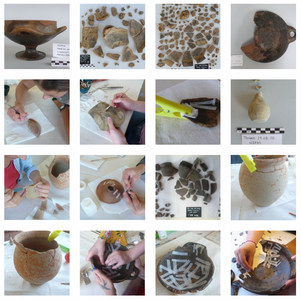
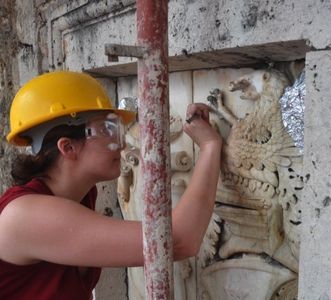
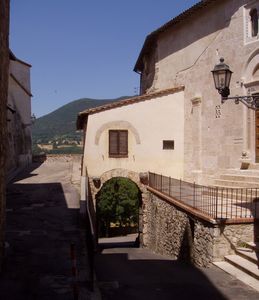
All programs are intensive courses that include both classroom theoretical instruction and hands on field work on original materials.
San Gemini Book and Paper Conservation School (Sept 2025 – May 2026, a nine-month graduate-level training program to teach all the basic skills necessary to be a professional book, paper, and archival material conservator).
All field work is being done with the approval and supervision of the Italian Ministry of Cultural Heritage (Ministero della Cultura and the Soprintendenza Archeologia, Belle Arti e Paesaggio Dell’umbria).
Massimo Cardillo
Director, San Gemini Preservation Studies
203 Seventh Ave., Brooklyn, NY 11215 USA
Tel. US +1 718 768 3508, Tel. Italy +39 350 023 6878
Cell / WA +1 917 327 1240
APPLY NOW
SGPS is a program of the International Institute for Restoration and Preservation Studies, based in New York. An academic relationship has been established with West Virginia University that offers our students the opportunity to apply for and receive credits through the WVU Art History Department (deadline for enrolling is March 1st). We have established cooperation agreements with the Museo della Storie di Bergamo and the Parco del Colosseo to study and conserve artworks and archaeological objects held in their museums, as well as a collaboration with the Historic Archives of the Commune di San Gemini for SGPS participants to study and conserve archival documents.
Our courses are open to students from various disciplines, both undergraduate and graduate. All lessons are taught in English.
Dates: June 1 to June 29, 2025
Application deadline: June 1, 2025
Project syllabus with full details: https://www.fieldsciences.org/wp-content/uploads/2024/10/Syllabus-Italy-Prane-Siddi-2025.pdf
Project video: https://youtu.be/4tOoWz_AcqU
OVERVIEW
公关
Program Description
Pran’e Siddi, or the Siddi Plateau, is a high basaltic plateau located in the south-central part of the island of Sardinia (Italy), near the modern town of Siddi. The area around Siddi was inhabited by prehistoric villagers beginning in the Neolithic period (ca. 4000-3200 BCE). During the Middle Bronze Age (ca. 1700-1450 BCE), these previously egalitarian people began to develop a hierarchical social system with an elite who expressed their power and prestige through the building of monumental stone towers called nuraghi. The elites of the Nuragic community on the Siddi Plateau built sixteen nuraghi, which they lived in and added onto for three centuries. By 1450 BCE, however, the elite sites on the Siddi Plateau seem to have been abandoned, and the population moved away.
Progetto Pran’e Siddi was formed to conduct a thorough investigation of Nuragic climate, environment, land use, and economic practices in the Siddi region. We are interested in finding out what kinds of pressures – social, environmental, and/or economic – made the Nuragic people abandon their towers on the plateau. We are answering these questions through a combination of archaeological excavation and survey. Excavation takes place at the site of Sa Conca ‘e sa Cresia, one of the largest nuraghi on the plateau. Survey focuses both on-site and off-site, addressing the other Nuragic structures on the plateau as well as the landscapes surrounding them. By participating in Progetto Pran’e Siddi, students will contribute to ongoing research while gaining professional skills in excavation methods, pedestrian survey, and artifact processing.
COURSE OBJECTIVES
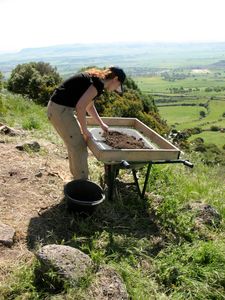
This field school has three main objectives: (1) to introduce students to the theory and practice of archaeological excavation, (2) to provide students with an understanding of the complex relationships between human behavior and environmental change, and (3) to acquaint students with the fascinating but little-known prehistoric culture of the Nuragic people on the island of Sardinia (Italy).
To achieve these objectives, the field school will (a) engage students in developing a practical working knowledge of archaeological field and laboratory methods through hands-on participation in all aspects of excavation and artifact processing; (b) introduce students to the intellectual challenges presented by archaeological research, including research design, the recovery and interpretation of data, and the continual readjustment of hypotheses and field strategies through lectures, critical reading, discussion, thought experiments, and participation in excavation; and (c) familiarize students with the Nuragic culture of Bronze Age Sardinia through readings, lectures, site visits, and direct engagement with archaeological materials. The course will take place in south-central Sardinia, Italy, near the town of Siddi. Students will divide their time between excavations at the site of Sa Conca ‘e sa Cresia, an early Nuragic corridor nuraghe, and laboratory processing of artifacts.
Students will participate in the following research activities: Excavation: Students will participate in guided excavations at Sa Conca ‘e sa Cresia. Record Keeping: Students will fill out specific excavation and survey forms, keep a field notebook, map sites and finds using GPS, and contribute to an artifact database. Cataloging: Students will participate in field sorting and cataloging of finds. Laboratory: Scheduled lab tasks will include washing, sorting, measuring, recording, photographing, and cataloging finds.
DIRECTORS Dr. Emily Holt, Archaeological Science Project Officer, Bioarchaeology Unit, Cardiff University (UK) (emilyholt2013@gmail.com) Dr. Mauro Perra, Director, Civico Museo Archeologico “Su Mulinu” di Villanovafranca (Italy) (perramarro@gmail.com)
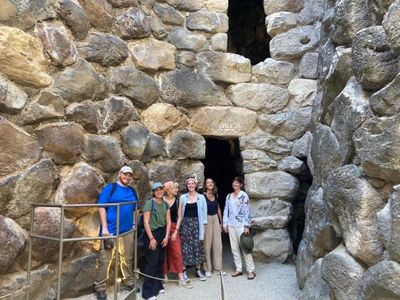
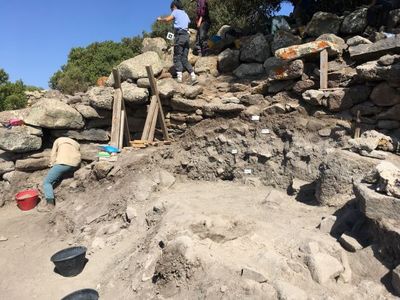
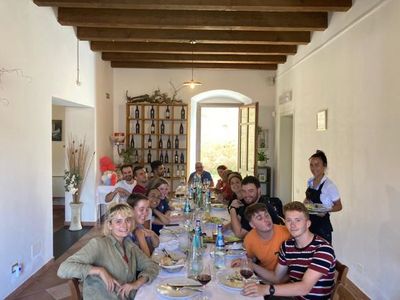
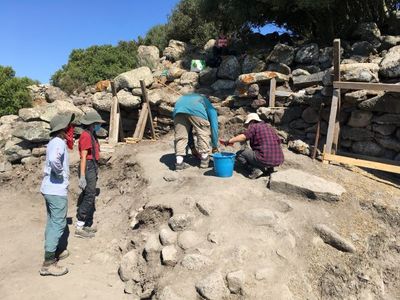
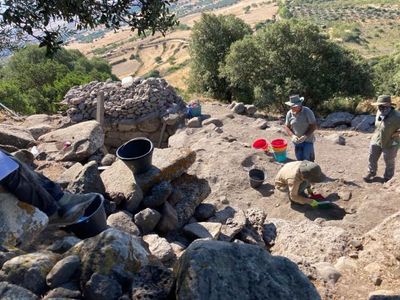
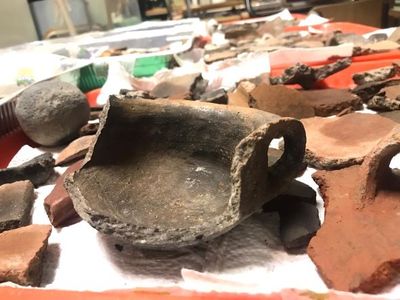
Dates: August 3 to August 30, 2025
Project website: https://www.fieldsciences.org/program/2025-italy-ostiense/
Project syllabus with full details: https://www.fieldsciences.org/wp-content/uploads/2024/10/Syllabus-Italy-Ostiense-2025.pdf
PROGRAM DESCRIPTION
The Necropolis of Via Ostiense was initially excavated in 1919. Archaeologists exposed 18 complete vaults (columbaria) with over 912 well preserved urns, containing cremated remains of Roman era individuals. The excavators decided not to excavate but leave the urns untouched and in situ, resulting in slow but progressive deterioration of the human remains and artifacts within them. Beginning in 2017, our team began an extensive and detailed study of these unique archaeological remains, micro-excavating each urn to better understand Roman burial practices, technology and cultural preferences. The 2024 will be our eighth season at the site and thus far, we were able to complete the study of 70 individual urns.
The urns at Via Ostiense represent a unique opportunity to study Roman funerary practices. This is the largest concentration of Roman cremated human remains in a single location and all within original context. This wealth of information allows for excellent comparative research, studying changes in cremation technology (temperature and type of fuel used), cultural preferences and choices (type of urns, objects found within them, number of individuals collected in a single urn) and biological elements (examining pathologies, diseases and using aDNA to study population variability). Although human remains at Via Ostiense were cremated, many long bones, teeth, pelvis & vertebra segments – some 10cm long – are still well-preserved and presented in the urns. This allows us to study a whole range of bioarchaeological elements, including pathologies, diseases, gender and age.
The micro excavation of each urn is a careful and detailed process. Students typically excavate a single urn in the season as this is a long and meticulous study of all human and cultural elements deposited in each urn. Students should expect to use both traditional microexcavation techniques and the use of a range of analytical instrumentation, including photogrammetry and portable energy dispersive X-ray fluorescence spectrometer (pXRF).
The relationships to and study of human remains in Europe differ widely from those practice in North America. This is the result of different archaeological histories, traditions, and cultural norms. Archaeology in North American is almost exclusively part of anthropology and under the Social Sciences, emerging from the historical & intellectual tradition for the study of the “other”. In Europe, archaeology is a standalone discipline, usually within the Humanities, studying the past of the “collective ancestors”. These differences will be discussed broadly during the program, exploring the origin and current manifestation of cultural preferences and its relationships to death in each region. While we plan to have lively discussions, our goal is to present students with the different traditions and their reasoning, not to suggest one is better than the other.
This program and its strong emphasis on the careful analytical study of cremated remains is relevant to students who wish to study Roman history, bioarchaeology and physical anthropology. The program will also serve well students who are interested in forensic studies of human remains and students interested in pursuing medical careers.
We will be excavating at an ancient burial ground. This means that respect to the dead will be front and center, and certain behaviour will be observed while at the site and/or at work. The individuals we are studying may be long gone, but we still owe them a debt of reverence for the opportunity to study their remains so that we may better understand, appreciate, and celebrate their lives.
The Via Ostiense project is a collaboration between the Sovrintendenza Capitolina ai Beni Culturali of Rome and the Universidad Europea Valencia (Spain).
COURSE OBJECTIVES
Our program presents a unique opportunity to learn how to properly excavate and document cremated burials from an archaeological site and how to reconstruct biological profiles from fragmented and distorted bone elements. Participants will learn about rituals and the process of burning and cremating the human body, as well as excavation methods, documentation and analysis of the findings.
Our program is designed to provide for both students and professionals the knowledge and experience required to study cremation remains and burials. Experience from this program may benefit individuals interested in forensic anthropology, forensic archaeology and bioarchaeology.
While some experience working with human remains (especially cremated remains) will be helpful, beginners are welcome. The first three days of the program will focus on training for work at the site. Each student will be trained in micro-excavation techniques and bio-anthropological studies.
This program provides practical field and lab training and the theoretical structure for find’s interpretation. Participants will be provided with a dossier with information on methods, practice and theory of the archaeology of death, physical anthropology and funerary archaeology.
We will hold a seminar every Friday afternoon. The role of this seminar is to discuss work done during the week, methods, findings, questions and discussion of research. Saturdays are dedicated for excursions to important archaeological and cultural sites in the area.
Program Director: Prof. Llorenc Alapont Martin, Professor of Physical and Forensic Anthropology, Universidad Europea Valencia Email: llor.alapont@gmail.com
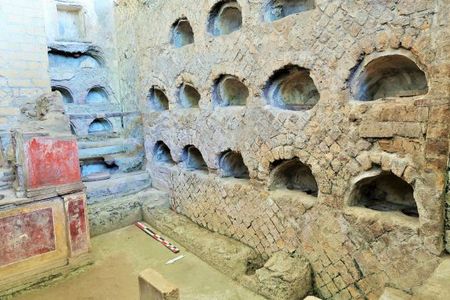
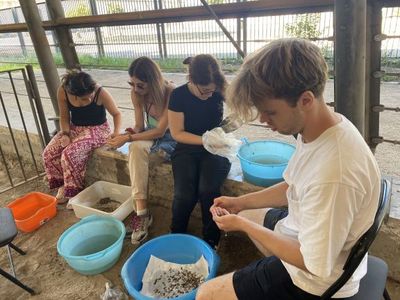

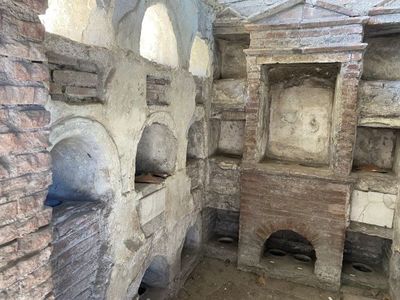

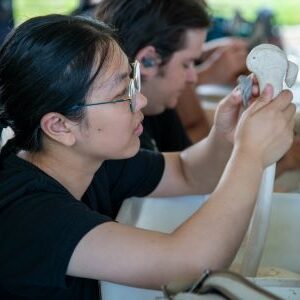
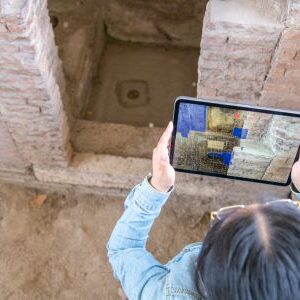
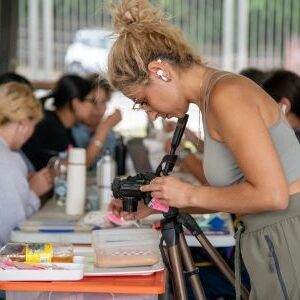
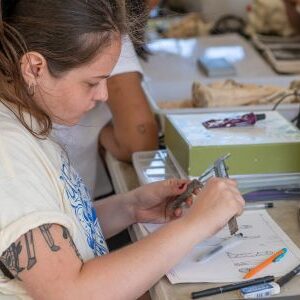
Project date: August 31 TO September 27, 2025
Project website: https://www.fieldsciences.org/program/2025-italy-roca-vecchia/
Project syllabus with full details: https://www.fieldsciences.org/wp-content/uploads/2024/10/Syllabus-Italy-Roca-Vecchia-2025.pdf
PROGRAM DESCRIPTION
The Bronze Age fortified settlement of Roca Vecchia is located on the Adriatic coast of Southeastern Italy at the narrowest passage of the Otranto Channel. It was a strategic key-site for crossing routes between the Aegean and the Central Mediterranean and its topography was closely related to the protected Torre dell’Orso Bay. Maybe more importantly, the ancient site of Roca Vecchia includes the Grotta Poesia cave, an important cult center since prehistory. The Bronze Age site was settled from the mid-17th to the late 11th century BCE and was protected by a massive wall, repeatedly destroyed and rebuilt over time.
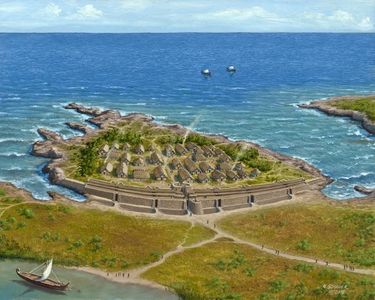 Findings from the Middle Bronze Age levels (17th -14th century BCE) attest to the early involvement of Roca Vecchia within the Aegean trade & commercial network. Artifacts recovered at the site include an unusual variety and peculiarity of products such as Lustrous-decorated, Burnished, Matte-painted and Minyan-type pottery imports, as well as locally manufactured Italo-Minoan ceramics. These findings indicate active & extensive trading along the southern Adriatic routes already at these early dates.
Findings from the Middle Bronze Age levels (17th -14th century BCE) attest to the early involvement of Roca Vecchia within the Aegean trade & commercial network. Artifacts recovered at the site include an unusual variety and peculiarity of products such as Lustrous-decorated, Burnished, Matte-painted and Minyan-type pottery imports, as well as locally manufactured Italo-Minoan ceramics. These findings indicate active & extensive trading along the southern Adriatic routes already at these early dates.
At its peak, Roca had complex fortification walls with at least five gates and a monumental main entrance. But by the mid-14th century BCE, Roca was attacked and destroyed by fire after a prolonged siege. Among the extraordinary finds sealed under the collapse of the defensive stonework, it is worth mentioning a huge quantity of complete locally handmade stone-tempered vessels, the remains of a group of seven unarmed people who died by asphyxia while trying to hide in a corridor, and the remains of a young warrior armed with an Aegean bronze dagger.
Despite the unquestionable local identity of the site, Late Bronze Age Roca yielded more Aegean type ceramics than any other settlement in Italy (including a large variety of both imports and their imitations). Roca appears to have been characterized by cultural hybridization of the local Italian population with Minoan and Mycenaean migrating elements.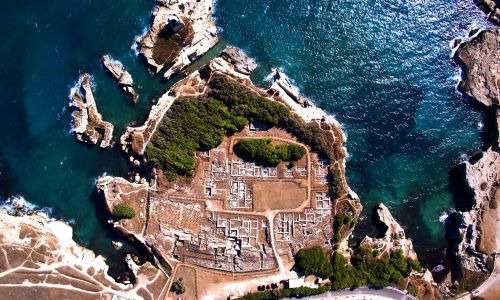
Recent investigations carried out in Roca – in areas that include the “Cult Center” and the monumental buildings of the “Hut-temple” – suggest that extensive ritual practices took place at Roca. Ceremonial and ritual activities incorporated symbols of both local and Aegean origin, suggesting strong incorporation of local and external religious traditions and practices.
Late and Final Bronze Age evidence from Roca also includes artifacts of local specialized craftsmanship of exotica such as ivory and amber, as well as metalworking activities in bronze and gold. Indeed, Roca has the richest collection of gold items ever found in the Italian Bronze Age (including gold sun discs and ornaments), pointing to the important and prominent role Roca played in the central Mediterranean area.
During the forthcoming season, we plan to continue investigating both Bronze Age fortifications and the settlement area, as well as funerary evidence dating to the second and first millennium BCE. For the 2025 season, we plan to investigate the area close to the internal wall of the Middle Bronze Age fortification, near the Postern C access. Students will excavate and document the multilayered stratigraphy and explore evidence related to the 14th century BCE battle which destroyed the earliest fortress of Roca. In addition, students will be engaged with documentation and analysis of artifacts and human remains recovered during the 2023 field season from the burial area of Grotta Poesia.
COURSE OBJECTIVES
The main objective of this field school is to provide students with a well-rounded understanding of archaeological fieldwork practice in the context of the ancient Mediterranean. Students will learn how research is designed and planned, its everyday routines on and off-site and ongoing scientific interpretation. As such, this experience aims to nurture students’ long-term interest in Mediterranean archaeology, and to allow them to develop the broader skills necessary to work in this and related disciplines, including self-confidence in field data-capture, hypothesis formulation, critical thinking, and teamwork. Students will receive lectures, where they will be provided with all the information needed to fully engage in the field activities. At the same time, students will help with opening the site. During the weeks of fieldwork, students will conduct excavation and laboratory work during weekdays. Weekends are dedicated to on and off-site documentation, museum visits and field trips.
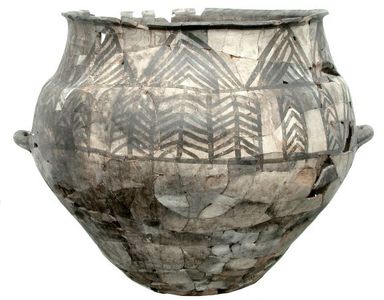
More specifically, students will participate in the following activities:
Lectures: These will be concentrated in the first week and cover the fundamentals of Italian archaeology and history, provide background on the excavation history of Roca Vecchia, and introduce students to the stratigraphic method of excavation and its single context recording system. The lectures will take place at the field school’s accommodation facilities.
Excavation: Students will spend four weeks excavating at Roca Vecchia. The site’s stratigraphy is complex, which will allow students to gain confidence in digging with every tool available to archaeologists. By working alongside expert trench supervisors, students will learn proper procedures for excavating a diversity of contexts, from large demolishment deposits, to floor surfaces and to standing Bronze Age architecture. Students will be taught how to recognize, retrieve and document all artifact and ecofact types found at the
site.
Laboratory: In the afternoons and (depending on progress) some mornings, students will participate in laboratory activities. Most of the finds at Roca Vecchia consist of pottery of various types and sizes. Students will learn to recognize different pottery styles and engage in classification and seriation. types present at the site. Roca Vecchia has also produced a wide array of other artifact classes, including metal ornaments, charred wood, faunal and human remains. Students will learn how to identify those artifacts and how to clean, catalogue, document and store them.
Documentation: Students will learn the different aspects of archaeological documentation. Students will learn how to keep an excavation diary, fill-out context sheets, use a level, draw sections and photograph excavation areas. During lab work, students will learn how to catalogue finds and photograph and draw special finds.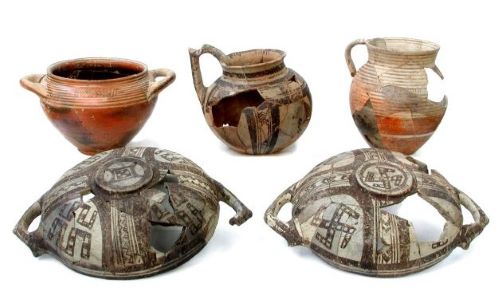
Seminars: This research project is multidisciplinary, directed by a group of specialized scholars who are specialists in different aspects of archaeological research. During the field season, project staff members will present seminars about their own research. These will include topography, stratigraphy, epigraphy, zooarchaeology, physical anthropology and archaeoethnobotany.
Field Trips: Field trips will take place during weekends. Trips will include: (1) visit to archaeological museums in the region to introduce students to the diverse ancient cultures of the region; (2) visit archaeological sites and other ongoing archaeological excavations; and (3) sightseeing of some of the regional cities of historical and archaeological interest, including Lecce.
At the completion of the field school, students will be able to: • Master with confidence all aspects of stratigraphic excavation, at different levels of detail, using a variety of tools (from brushes to trowels, pickaxes, and shovels). • Independently conduct every step for single-context sheet recording, including mapping with survey equipment, context description and interpretation, and drawing and photography. • Know what the proper procedures are for processing, documenting, and storing finds in the lab and how to effectively carry them out. • Have a solid grasp of the basics of ceramic analysis. • Understand the role of Roca Vecchia within the broader framework of southern Italian archaeology. • Be able to engage with the theoretical underpinnings of research at Roca Vecchia, which include migration, culture contact and identity. • Have gained familiarity with the culture of southern Italy, and particularly the Puglia region.
DIRECTOR: Prof. Teodoro Scarano – Associate Professor of Prehistory and Protohistory (SSD L-ANT/01), Dipartimento di Beni Culturali-Università del Salento (teodoro.scarano@unisalento.it)
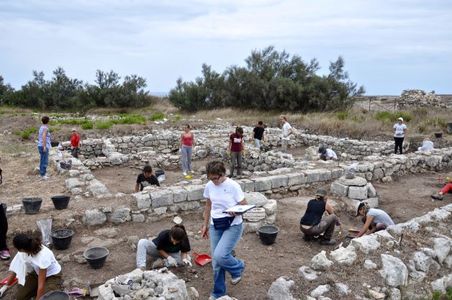

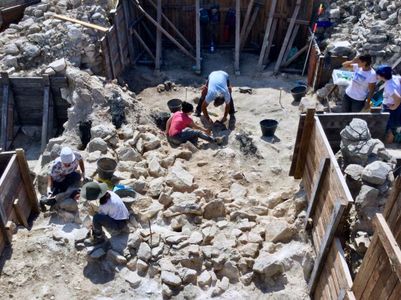
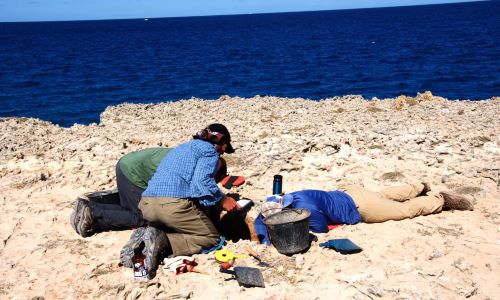

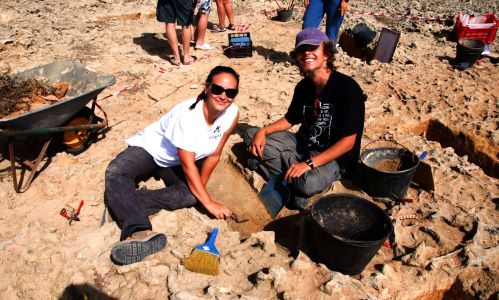
Field school dates: Not offered in 2024, but plans to resume in Summer 2025
Project website: https://archaeology.stanford.edu/academicsfield-schools/archaeological-research-sicilian-maritime-heritage
About Project ‘U Mari
Project ‘U Mari (“the sea” in local Sicilian dialect) explores the maritime heritage of southeast Sicily, examining millennia of maritime life and connections across the Mediterranean from a key vantage point between west and east, south and north. Participants will work on one or more of the broad project’s key initiatives: conservation and analysis of artifacts from shipwrecks in the area, archaeological investigations at the ancient fishing town of Vendicari, survey and excavation of a shipwreck in Vendicari’s port, 3D scanning and archival documentation of the material culture and traditions of 2500 years of tuna fishing, among others. These efforts serve not only to promote new research into historical livelihoods along the sea, but guide our consideration into how best to preserve and present a diverse maritime past through exhibits and other forms of public engagement.
Undergraduate Field School
The focus of Project ‘U Mari for field school students is:
• Archaeological survey and excavation on land
• Underwater archaeological investigations
• Study of archaeological finds
• 3-D documentation of heritage
• Public engagement and preservation of the past
In 2023, prospective Project ‘U Mari field school participants will have an option to specify in their application if they wish to be considered for a diving or a non-diving role.
Pre-departure training and coursework
Project ‘U Mari has a pre-field training requirement that takes place over the course of the spring. Accepted students are expected to undertake this training and preparation within the framework of the spring quarter course, ARCHLGY 140: Sicily and the Sea (note that the timing of this course may change).
On site
Field training for students is divided into several major components, of which each student may participate in several: training as archaeological divers and underwater work on site, methods of survey and excavation on land, finds and conservation work in the lab, and 3D and other methods of heritage documentation and museum work.
Field training for diving students will initially focus on the development of skills for archaeology underwater; this training will allow participation in the survey and excavation of shipwreck sites and artifact assemblages in tandem with the methodologies of conservation and recording of waterlogged objects. Field training for students wishing to work on land will focus on practical methodological skills for both survey and excavation, allowing them to participate in the new investigations of an ancient port settlement and the processing and analysis of finds.
Students will generally spend part of their training in the field, on land or underwater, and part on heritage documentation or museum development. Students will also play a major role in the work we do with objects back in the museum and lab: not only conservation, 3D documentation, and study of finds, but leveraging these materials to help implement new research, exhibit, and heritage management strategies. Students will also have opportunities to play a role in smaller-team fieldwork that focuses on more recent heritage associated with traditional fishing and contemporary refugee journeys.
All students should expect to work Monday-Saturday for the entire six-week field school, participating each day in fieldwork, artifact documentation, research, and conservation in the lab. To broaden and deepen student engagement with this material culture, the project organizes discussions, talks, and demonstrations by staff and visiting scholars. Students are encouraged to hone and develop their research interests through their work in Sicily, and students in the past have used the field school as the first step toward pursuing a research program and specialty in consultation with Stanford faculty, graduate students, and professional archaeologists from around the world.
A day in the life of archaeology in southeast Sicily
Emma Charity (‘25), a 2022 field school participant Project ‘U Mari, writes about her experience conducting archaeological work in southeast Sicily:
Our days in Sicily were long, but well-paced and extremely fulfilling. We woke up around 6:30 for breakfast at 7. After a brief team meeting, the dive team (myself included) would head to the dive shop. We set up our equipment and headed out to dive. The boat ride was my favorite part of the day: the salty Sicilian breeze in the morning, views of the gorgeous beach, and many laughs. Some days we would survey new areas and other days we would work on an excavation.
After the dive, it’s lunch and dive log time. We met about finds on the dive and wrote them in detail on our dive logs. Mateo’s restaurant makes amazing pastas and salads. It was always a pleasant surprise to see what the folks at his restaurant whipped up. Jasmine, dive assistant and amazing waitress, was always a warm smile to see at lunch. Shout out Jasmine! After lunch we had a two-hour siesta. This break helped me pace out my day and maintain my personal health and balance. Some days I would get gelato with other students, other times just take a nap.
In the afternoons, I would work on the excavation project of the boat that carried displaced people across the Mediterranean. This project was difficult some days but had so much purpose and really changed my relationship with human rights work. We documented items and added them to a catalogue for further research. After our afternoon projects, we showered and met up for a team dinner around 8. I had a great time in Sicily and made long lasting connections and friendships!
Contact: Professor Justin Leidwanger Email: jleidwa@stanford.edu
Learn more about Project ‘U Mari (www.umari.net) and its predecessor, the Marzamemi Maritime Heritage Project (marzamemi.stanford.edu)
Learn more about general field experience opportunities with the Stanford Archaeology Center.
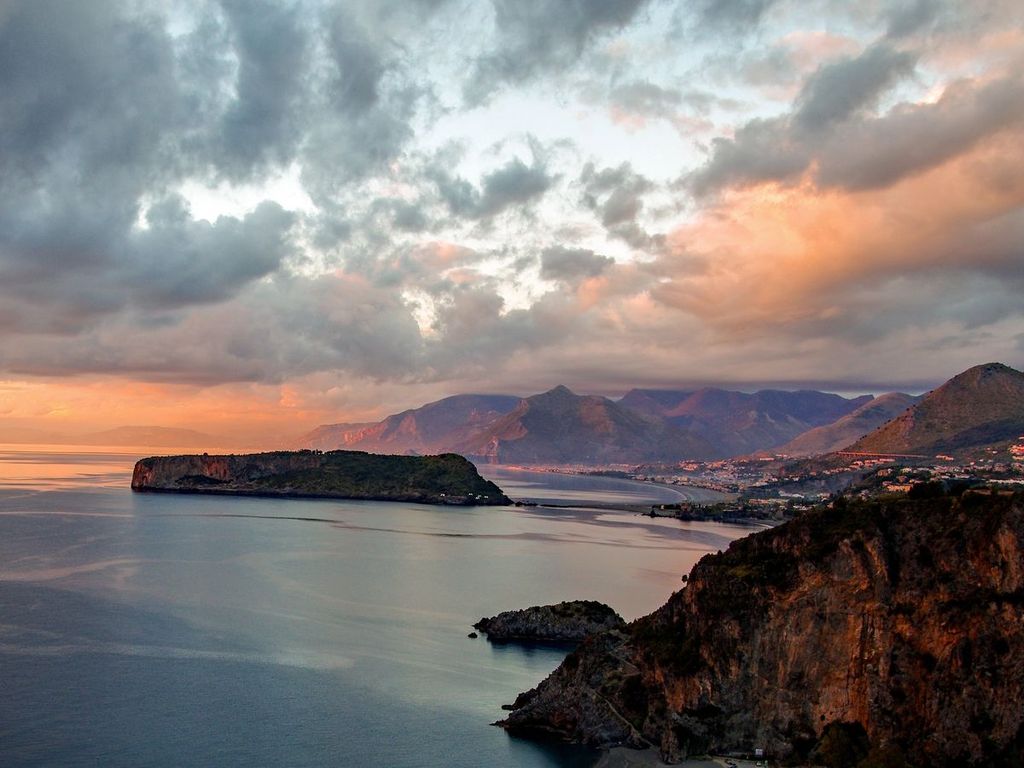
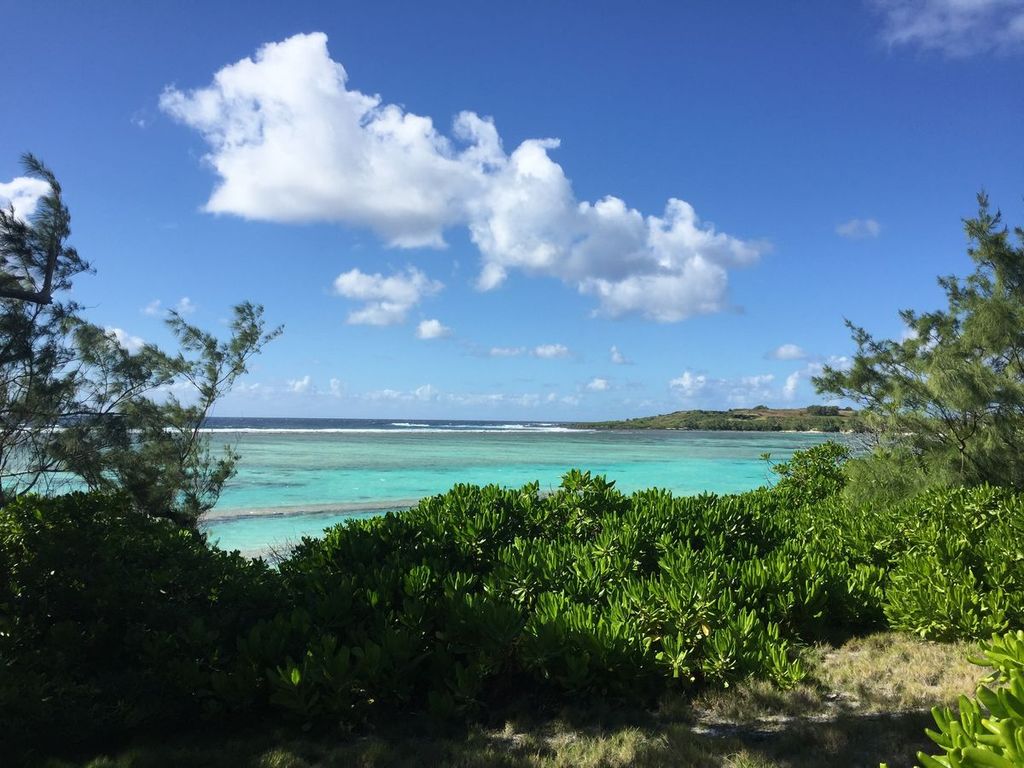
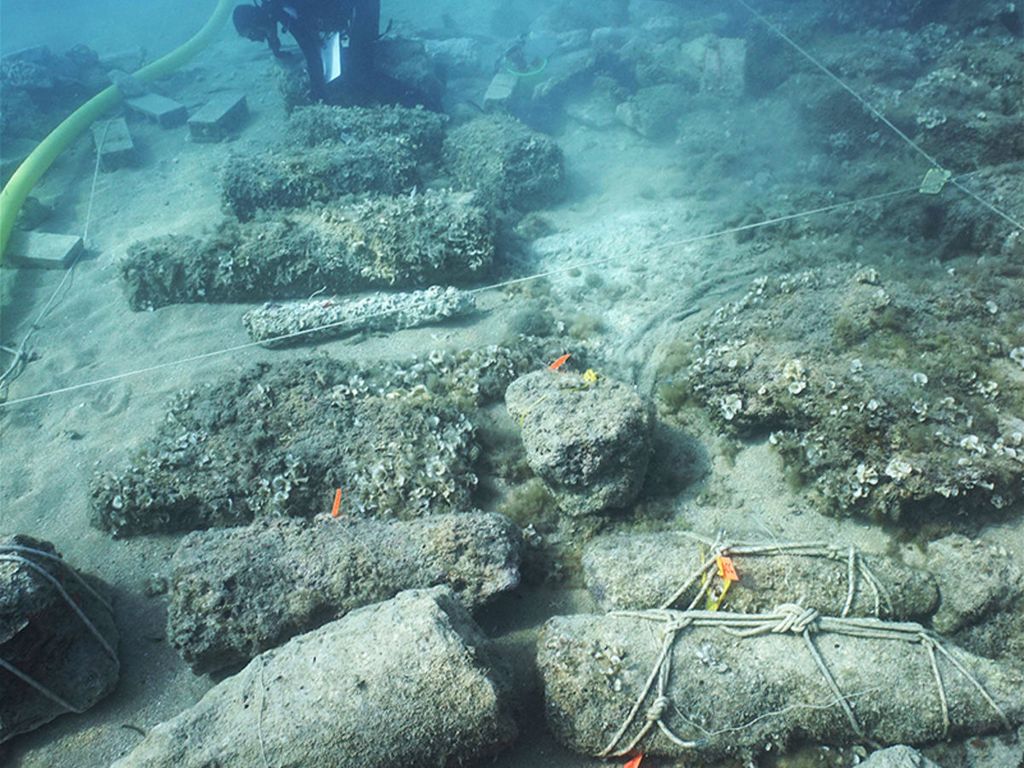
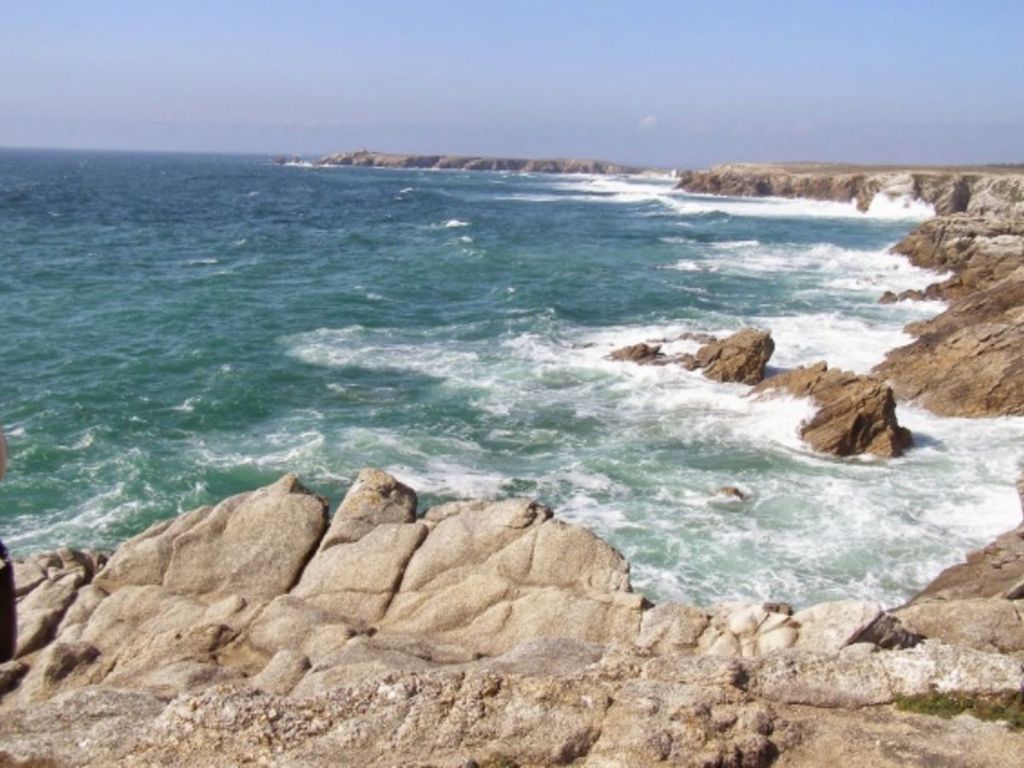

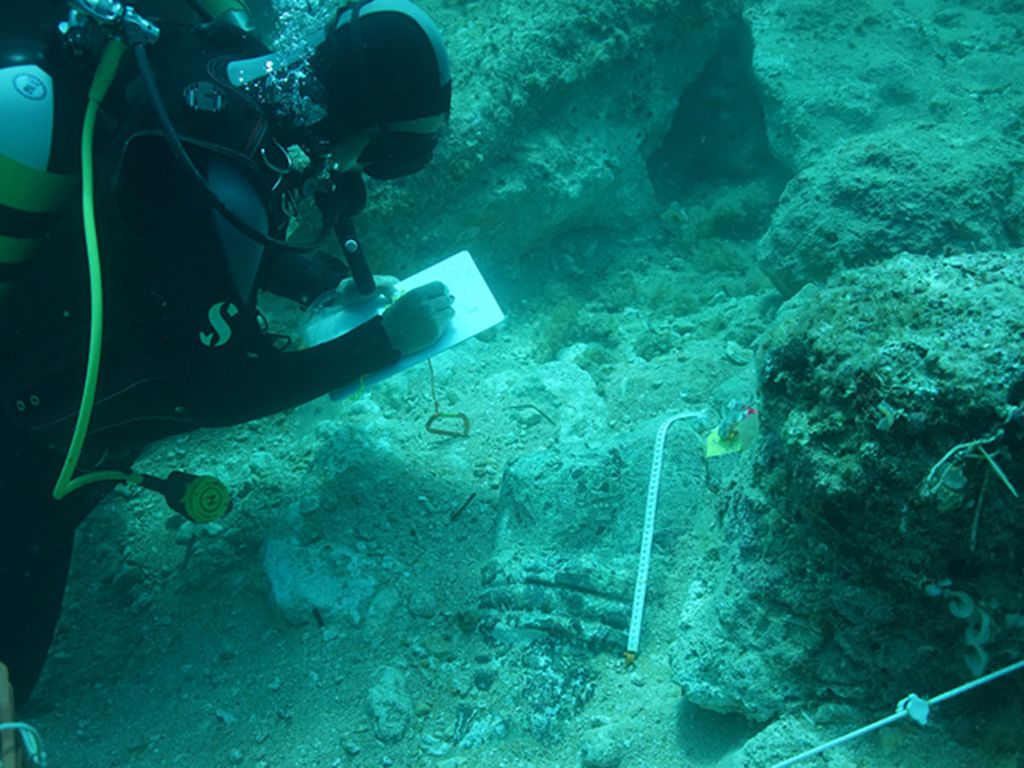

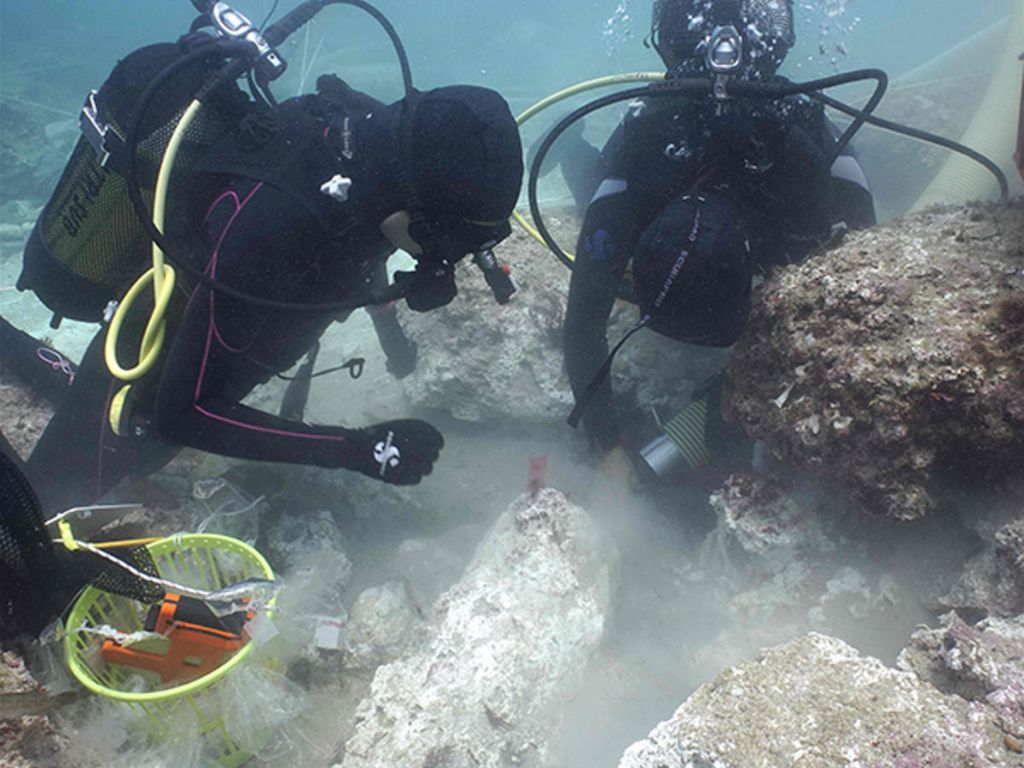

SEARCH – School of Etruscology: Archaeology and Research in Cultural Heritage
Dates: 9 June – 20 June 2025
Course website: https://www.summerschoolsineurope.eu/course/search-school-of-etruscology-archaeology-and-research-in-cultural-heritage/
School: University of Pisa Summer School
Language: English Credits: 3 EC Fee: 750 EUR
The “SEARCH – School of Etruscology: Archaeology and Research in Cultural Heritage” offers an intensive academic programme of 10 working days involving lectures, visits, small group tutorials and archaeological excavation activities, related to the history of the Etruscan city of Volterra situated in the north part of Tuscany.
The programme will be held on campus at SIAF Volterra International School of Higher Education and it will be conducted, both in the classroom and in the field, by scholars and experts in archaeological disciplines. During the weekend, participants will have free access to additional nearby archaeological sites.
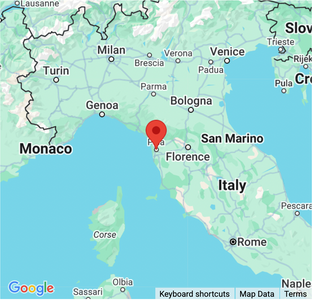 The lessons will be designed for students with a background in classical studies who wish to gain a deeper understanding of Etruscan and pre- Roman civilisations. The School of Etruscology is intended as a programme divided into different activities, including classes (lectures of archaeology, palaeopathology, photogrammetry), workshops dedicated to the preliminary cleaning and classification of archaeological finds, thematic visits to museums and archaeological sites and fieldactivities related to stratigraphical excavation. Specifically, excavation activities will be held in the Etruscan necropolis of Colombaie. The excavation carried out since 2016 by the Etruscology Team of the University of Pisa revealed the presence of Late Orientalizing/Early Archaic mounds.
The lessons will be designed for students with a background in classical studies who wish to gain a deeper understanding of Etruscan and pre- Roman civilisations. The School of Etruscology is intended as a programme divided into different activities, including classes (lectures of archaeology, palaeopathology, photogrammetry), workshops dedicated to the preliminary cleaning and classification of archaeological finds, thematic visits to museums and archaeological sites and fieldactivities related to stratigraphical excavation. Specifically, excavation activities will be held in the Etruscan necropolis of Colombaie. The excavation carried out since 2016 by the Etruscology Team of the University of Pisa revealed the presence of Late Orientalizing/Early Archaic mounds.
Confirmed speaker and exerciser (in alphabetical order):
– Fabrizio Burchianti, Samuele Cambianica, Carmine De Mizio, Giulia Riccomi, Maria Vittoria Riccomini, Lisa Rosselli, Emanuele Taccola
At the end of the programme there will be a final written examination to obtain the ECTS.
Thanks to a partnership with the Fondazione Cassa di Risparmio di Volterra, the Winter School will be held on campus, in Volterra (Pisa), at SIAF, Strada Provinciale del Monte Volterrano, Località Il Cipresso.
SIAF will host the participants in its facilities not only for lessons, but also offering them food and accommodation.
Course leader: Prof. Lisa Rosselli
Target group: The School of Etruscology welcomes University BA, MA and PhD students or young researchers in Archaeology, Classics, History, Cultural Heritage Management and disciplines related to Humanities.
Course aim: The purpose of the School of Etruscology is to enhance the knowledge of the archaeological heritage of the ancient Etruscan city of Volterra. The academic programme aims to provide students with the appropriate tools to study the ways and times of the development of an ancient Etruscan city through activities such as the analysis of the material culture and the discovery of the archaeological heritage. In particular, thanks to the collaboration of the Guarnacci Museum, participants will be guided in in-depth thematic studies of specific Etruscan artefacts. Moreover, the field experience in the Colombaie necropolis will be an opportunity for the learning of the first basics of the archaeological excavation.
Dates: 2 June – 13 June 2025
School: University of Pisa Summer School
Language: English
Credits: 6 EC
About
This Archaeology Summer School takes place in the scenic medieval castle of Populonia, overlooking the Gulf of Baratti and the islands of the Tuscan Archipelago. Once a prominent Etruscan and Roman city, the site is located in the heart of Tuscany, near Florence, Pisa, and Siena, within the Archaeological Park of Baratti and Populonia.
The Summer School will be repeated in two sessions: 19-31 May 2025 and 2-13 June 2025. In both cases the registration deadline is 4 April 2025.
Each session features hands-on fieeldwork in archaeological excavation, creation of scientific documentation (graphic, photographic, and written), and a ceramics workshop using finds from the excavations.
Lectures cover topics such as stratigraphy, the historical and cultural context of the site, material culture, and include educational visits to local museums and archaeological sites.
All activities are led by professional staff involved in the University of Pisa’s ongoing investigations on the Acropolis of Populonia, with participation from Italian students to foster collaboration and exchange.
At the conclusion of the program, participants will complete a final assessment on the knowledge and skills acquired, which will contribute to their overall evaluation.
Participants will stay in a guesthouse managed by the Ministry of Culture within the Archaeological Park of Baratti and Populonia.
The guesthouse is equipped with a kitchen, shared bedrooms and bathrooms, and laundry facilities. Food will be provided via grocery deliveries, with participants responsible for preparing their own meals. Participants should provide a certificate or self-declaration of any food allergies or intolerances.
Participant’s personal requirements and mandatory equipment (each participant must provide independently):
– Tetanus vaccination certificate
– Medical certificate of good health or fitness for work
– Safety clothing, including reinforced-toe safety shoes and durable work trousers (long trousers)
– Personal trowel and work gloves (optional)
The Summer School will be held on campus in Località Baratti, Piombino (Livorno), at Parco Archeologico di Baratti e Populonia.
Course leader: Prof. Fabio Fabiani
Target group: Bachelor’s and Master’s students, PhD candidates, research fellows, and professionals in relevant fields.
Course aim: The aim of Summer School is the acquisition of knowledge on archaeological research in the study of the ancient world, practicing the stratigraphy method and the drafting of scientific documentation in the field. Our scientific goal is to gather archaeological data on Roman structures located on the Acropolis hill of the ancient Etruscan and Roman city of Populonia. The site holds significant archaeological interest, featuring cultural artifacts from the Iron Age settlement of Fufluna/Pupluna, Roman walls on the Acropolis, temples, and other structures. Systematic research has been ongoing since the 1980s, with investigations in the sacred area revealing at least three temples surrounding the Roman forum. Recently, the University of Pisa uncovered a Roman thermal bath complex in the area.
Fee info: 1000 EUR, tuition fees, and 1000 EUR, additional costs
The total cost for participation amounts to 2000 euro. This includes tuition fees (incl. the supply of basic DPI – such as work gloves, masks, protective glasses) as well as accomodation, food/meals, transportation to and from the Summer School site (on arrival/departure days) and to and from the excavation site (daily), excavation management costs.
Field School Pozzeveri in Archaeology and Bioarchaeology – 1st Session
Date: July 1 to July 26, 2024 Application deadline: April 30. 2024
Program websites: https://www.paleopatologia.it/attivita/field-school-pozzeveri-in-archaeology-and-bioarchaeology/
Project introductory video can be seen here
Registration link: https://www.unipi.it/index.php/humanities/item/3892-summer-school-field-school-pozzeveri-in-medieval-archaeology-and-bioarchaeology

Th
The field school at Badia Pozzeveri is an outstanding opportunity for students to gain practical experience in archaeological excavation and bioarchaeological investigation by working side-by-side with leading researchers in the field. The field school is designed to provide participants with knowledge of archaeological eld methods, including:
Practical, hands-on experience in the field will be complemented by laboratory activity in archaeology and bioarchaeology. Lectures by the directors and instructors on their research will also provide students with insights in the theory and practice of archaeology and physical anthropology.
The course is open to up to 15 undergraduate, graduate and post-graduate students in archeology, anthropology or allied disciplines from any country and institution.
The Summer School has no formal prerequisites; students will be fully trained for all the activities they experience.
Students interested in applying to the Summer School must fill out and submit the Enrolment Form online, via Alice portal.
Prior to their arrival to Italy, the students are required to complete all readings included in the attached reading list. The readings will include topics such as bioarchaeology, stratigraphy, geographic information systems. An understanding of such topics is essential to maximize on-site learning.
Students are required to participate actively in both fieldwork and laboratory activities, and to demonstrate a good understanding of the concepts and techniques employed in the field.
Participation and overall performance in the field will be monitored throughout the entire field school.
A Final Examination will be administered during the last week of the program to assess the student’s mastery of the theoretical and practical concepts and techniques learned throughout the entire field school.
All the documents must be in pdf format, in order to upload them on the portal when required.
Application has to be submitted via Alice portal following the instructions of the “How to apply” page.
Fees 1,000 euro (+ 1,400 euro for accomodation)
Pay fees by Debit/Credit Card or PayPal online using the following form filling it with all the required data:
PagoPA – Payment Form (TUITION FEES)
NOTICE:
Accomodation
Pay accomodation by Debit/Credit Card or PayPal online using the following form filling it with all the required data:
PagoPA – Payment Form (ACCOMODATION)
NOTICE:
More information on accomodation can be requested directly to the Summer School coordinator.
Please write to the coordinator for further details.
Program Dates: July 1 – 26, 2024 Application Deadline: 30 April 2024
Coordinator
Dr. Antonio Fornaciari antonio.fornaciari@unipi.it
Website https://www.paleopatologia.it/
Summer/Winter School Office support.summerschool@unipi.it
Full project details and application link can be found at https://www.paleopatologia.it/attivita/field-school-pozzeveri-in-archaeology-and-bioarchaeology/#how-to-apply
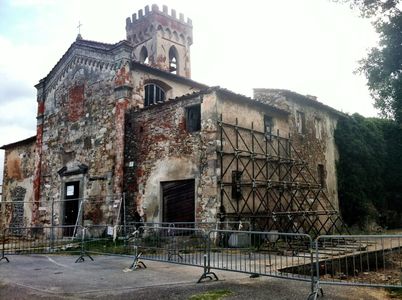
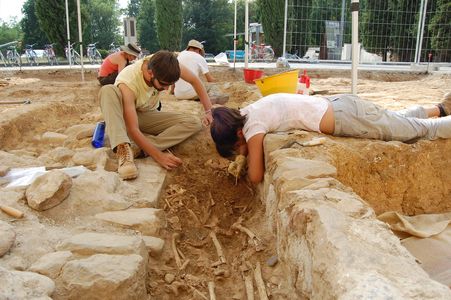

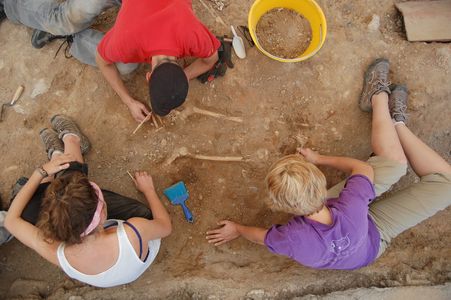
Date: Multiple sessions in May, August, and September 2024.
See the project website for date and cost options: click here
Overview
The excavation of the Roman settlement of Poggio del Molino, the only example of a Roman villa in the territory of Populonia systematically investigated, is conducted under the scientific direction of the University of Florence (in agreement with Municipality of Piombino) and the professionals of the Archeodig Project, with the support of the non-profit organisations Past in Progress and the Earthwatch Institute.
The archaeological site extends over the northern and eastern slopes of a promontory that acts as a watershed between the beach of Rimigliano in the north, the Gulf of Baratti to the south and the northern boundary of the town of Piombino (Livorno).
The Roman structures are located on a plateau, about 20 meters above sea level, that dominates the stretch of sea between San Vicenzo and the Isle of Elba in the west, and the Metalliferous Hills and the plains of Campiglia lagoon to the east.
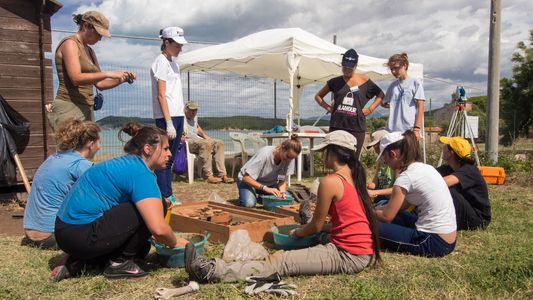

杜
In the first half of the 1st century BCE, without the threat of pirates, the building was re-purposed as a farm with an adjoining ‘cetaria’, or small home-based factory, producing ‘garum’ (fish sauce), equipped with pools for soaking the fish, which we can still see today.
Around the middle of the 2nd century CE, after a thorough renovation, the building took on the characteristics of a maritime villa which was later destroyed around the end of the 3rd century CE, probably by an earthquake. The villa was organised around an open area, set out as a garden and exploited the same two accesses used in the earlier phases. The western entrance gave access to the main living area (cubicula and dining rooms), decorated with mosaics and frescoes and to the bath complex via a corridor overlooking the sea. The slave quarters, of which are known the kitchen and other utility rooms, still under excavation, was accessed via the eastern entrance.
In the 4th century, after the destruction, the eastern sector of the complex is reoccupied and used for activities connected with iron working. In addition to a large amount of iron slag and hematite, a furnace connected with a forge have been documented.
Even in the 5th century, the site experienced a significant phase of inhabitation connected with the presence of a gathering place, probably linked to early Christian worship, and of a tomb set in a wall of the villa ruins.
Today, the top of the hill is occupied by the beautiful Villa del Barone, built in 1923 by Baron Luigi De Stefano and Assunta Vanni Desideri, the daughter of Eugenio. From a paper of the 16th century, the “Bandita di Porto Baratti”, and other archival documents we know that the Poggio owes its name to the mill which was a part of Torre Nuova (“Torre Nuova del Molino”), the building of coastal defense and a lookout built in the early sixteenth century by Cosimo I de’ Medici, on the slopes of the promontory.
Teams will work between the remaining walls of the Roman villa of Poggio del Molino (Hill of the Mill), overlooking the Tyrrhenian Sea. The villa was established at the start of the 1st century A.D. when the main city of Populonia was mysteriously abandoned. The villa area has been exposed to continued habitation right up until the end of the 5th century and so is one of the few existing sources of information from this extended time period.
Activities include:
Contacts: The Archaeological Field School at Poggio del Molino, via della Pieve. 6, Livorno, 57127 IT Tuscany, Italy
Tel. +39-339-7544-4899
Project website: https://www.kenyastudyabroad.org/origins-summer/
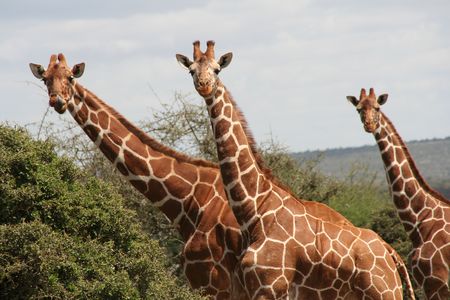
Do you want to learn about the methods used to understand ancient humans and the environments in which they lived, discover fossils and artifacts, and visit field sites where some of the most important prehistoric discoveries were made?
TBI’s Origins Summer Field School addresses the place that humans occupy in the natural world and how we came to occupy that position. This program focuses on hands-on experience in field survey and excavation methods, paleoenvironmental reconstruction, taphonomy and more, and includes field trips to important paleontological and archaeological sites, diverse ecological settings, and remarkable geological features throughout the Turkana Basin. Participants will work directly with leading scientists and do fieldwork at active hominin fossil localities and archaeological excavations.
Application information here
COURSEWORK
Students take three course modules that provide 9 credits of upper-division or graduate-level coursework in ecology, paleoanthropology, and archaeology. All coursework is taught in English by leaders in each field.
The course modules offered are:
An introduction to the ways scientists use the fossil and archaeological records to learn about past changes in Earth’s climates and environments, and how humanity’s ancestors responded to those changes physiologically and technologically. Interdisciplinary lectures will show evidence from the Turkana Basin’s paleoenvironmental, fossil and archaeological records of the dynamic interactions between the climate, environment, local food webs, and ancient human populations. This background will prepare students for training in paleoanthropological and archaeological field methods.
This course is an opportunity to participate in all aspects of a paleoanthropological research project, focusing on practical aspects of vertebrate paleontology, geology, zooarchaeology and taphonomy. Students are trained in field reconnaissance, fossil survey, plotting, preservation, and collection, analysis and interpretation. Hands-on examination of fossils from Plio-Pleistocene or Holocene sites around Lake Turkana will teach students how human ancestors and other animals adapted to the environments around them. Experts from TBI, Stony Brook, and other institutions provide instruction in lectures, labs, and via fieldwork within the context of on-going projects.
This course focuses on archaeological survey, excavation, artifact recovery and analysis. Students are trained in excavation, recording, artifact retrieval, surveying, field sorting techniques, and interpretation. Hands-on examination of prehistoric artifacts from Plio-Pleistocene or Holocene sites around Lake Turkana will teach students how human ancestors adapt culturally and technologically to the environments around them. Experts from TBI, Stony Brook, and other institutions provide instruction in lectures, labs, and within the context of on-going field projects.
Students may also enroll in Independent Study (ANP/ANT 487 or ANT 610) for additional credits to perform research projects.
Read: Top ten reasons to join the Origins Field School
If you have questions about the programs, please call or email Alicia DeRosalia in TBI’s office at Stony Brook University:
Alicia DeRosalia
Administrator, Turkana Basin Institute
Stony Brook University, N-507 Social and Behavioral Sciences, Stony Brook, NY 11794-4364 USA
Phone: (631) 632-5800 Email: turkanabasin@stonybrook.edu

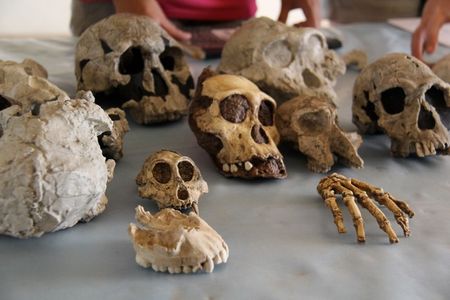
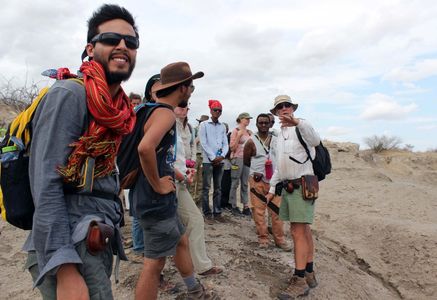
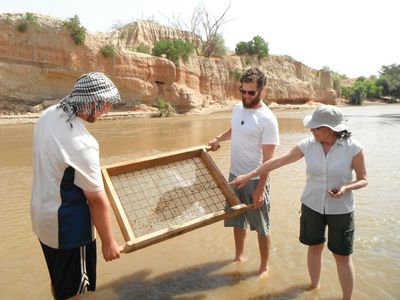
Paleoanthropology and Geology Field School at Olduvai, Tanzania (Indiana University Bloomington; Tanzania)
Harvard Summer Program in Kenya (Harvard University; Kenya)
Ecology, Evolution, and Peoples of East Africa
(University of Arkansas; Tanzania)
Drimolen Paleoanthropology and Geoarchaeology Field School (Washington University & La Trobe University; South Africa)
Koobi Fora Field School (George Washington University; Kenya)
Turkana Basin Institute Origins Field School (Stony Brook University; Kenya)
Human Origins Migration and Evolution Research (HOMER) Field Experience (Research Consortium)
Olduvai Gorge International Field School (University of North Carolina; Tanzania)
Swartkrans Archaeology Field School (University of Wisconsin-Madison; South Africa)
Dates: June 9 to June 28, 2025 Application deadline: March 30, 2025
Project website: see https://www.archaeological.org/fieldwork/melite_civitas_romana/ or https://www.facebook.com/Intercontinental-Archaeology-Melite-Civitas-Romana-Project-1577290875693294/
Affiliation:
Heritage Malta, University of South Florida, University of North Alabama, Intercontinental Archaeology
Project Director:
David Cardona (Heritage Malta), Ben Lowe (University of North Alabama and Intercontinental Archaeology), Davide Tanasi (University of South Florida), Rob Brown (Australian National University; Intercontinental Archaeology), Andrew Wilkinson (Intercontinental Archaeology)
Project Description:
The Domus Romana in Rabat, Malta is the remains of a rich, aristocratic roman town house (domvs) which was accidentally discovered in 1881. Although very little remains from the house itself, the intricate mosaics which survived for centuries as well as the artefacts found within the remains are testimony enough of the original richness and story of this fantastic abode. The archaeological landscape surrounding the house has been excavated to some extent close to the structure of the domus. These excavations dating back to the late 19th and early 20th centuries uncovered the remains of a road passing by the structure as well as a number of other buildings and features lining the road. This archaeology needs a great deal of further research and re-excavation, as does the open ground beyond the Domus Romana that continues below the city of Medina. Once known as the Roman city of Melite, Medina is contiguous to the site.
The Project, for our intentions, aims to establish the extent of the roman archaeological landscape in which the Domus sits. Furthermore, we hope to determine a possible role of the Domus in that landscape including its place in the Roman settlement and agricultural function of the region as well as its significance to the Roman settlement at Melite. We also hope to answer a number of broader questions we have regarding links of the Domus and the surrounding structures to local trade, including the possibility of the Roman use or control of earlier Phoenician trade structures. Our project, though only in the field for short research and excavation seasons, will continue to work on the data and materials from our research year-round. The proposal that is being drawn up will include thorough processes and procedures for the protection and conservation of the site after the field season has concluded as well as a rigorous publication expectation.
The field school entails 3 weeks of archaeological fieldwork, classification, analysis and emergency restoration of ancient artifacts and application of 3D scanning and digital photogrammetry to archaeological contexts.
Costs include 4 star accommodation, 2 meals each day, transport to/from site, and free access to Heritage Malta sites and lecture on various aspects of archaeological excavations methods archaeological science and digital archaeology. Costs of 2024 season are yet to be determined.
A trailer of the 2023 excavation season can be found here: https://www.facebook.com/watch/?v=845495580060622&extid=CL-UNK-UNK-UNK-AN_GK0T-GK1C&mibextid=2Rb1fB&ref=sharing
Period(s) of Occupation: Roman Imperial period – Early Medieval
Dates: Session 1: June 14-29, 2025 Session 2: June 28-July 12, 2025
Both Sessions: June 14-July 12, 2025
Project website: https://mongoliacenter.org/mfs24/ancient-cities/
Project video: https://youtu.be/N_quwePpw5c
The American Center for Mongolian Studies (ACMS) is a non-profit educational organization that supports the development of Mongolian Studies and academic exchanges with Inner Asia.
Delve into Mongolia’s fascinating past and gain hands-on experience excavating at a working archaeological site in Central Mongolia. Work alongside prominent American and Mongolian archaeologists on this Field School course led by Dr. Richard Ciolek-Torello, former Vice President of Statistical Research, Incorporated and Director of the Uyghur Cultural Heritage Project, to understand Mongolia’s long history of urban settlement. Get acquainted with the powerful Uyghur Empire, one of the precursors of the Great Mongol Empire, while learning real archaeological methods and practices as a participant in this ongoing excavation. No prior experience with archaeology, Mongolia, or field research is required. You may apply to participate in one or both sessions of this course.
Course Overview
Today’s Mongolians are the descendants of nomads, who constructed some of the greatest polities of the Old World. Despite the prominent role of these empires on the world stage, surprisingly little is known of the indigenous organizational traditions from which they arose. These traditions involved mobile pastoral populations living in marginal environments – features commonly associated with egalitarian societies.
How and why states emerged in this unusual context is one of the foremost research questions in the archaeology of Central Asia and Mongolia in particular. Important to addressing this question is the study of the development of urban centers in the nomadic pastoral societies that populated the region. Although many urban centers are known, few have been studied intensively. To address this deficiency, in 2024 Dr. Richard Ciolek-Torello and his team began a long-term program of investigation at Tsagaan Sumiin Balgas, an urban center established by the Uyghur Empire in a tributary of the Orkhon Valley of central Mongolia sometime between the 7th and 8th Centuries CE.
The Uyghurs, who now reside in what is today western China, where they are persecuted, are the descendants of a Turkic group that built an empire in present-day Mongolia predating the better-known Mongol empire of Chinggis (Genghis) Khan. While previous empires in Mongolia built forts and temples, the Uyghurs built Mongolia’s first towns and cities. Dr. Ciolek-Torello and his team, in partnership with ACMS, have developed a comprehensive cultural heritage program to test theories of state development in nomadic societies while elucidating and preserving important Uyghur cultural heritage, including their ancient archaeological sites and monuments.
This unparalleled course offers participants the opportunity to learn archaeological practices and methods from a well-respected expert on a real, working excavation. Join us for one or both sessions of the program to build your archaeological skillset! No previous experience required.
This course can be taken together with other ACMS Field School courses such as Hustai National Park: Managing Biodiversity in the Home of Mongolia’s Native Horses (June 9-22) and/or The Impacts of Climate Change on Biodiversity in Mongolia’s National Parks (July 21-August 3).
Research Goals
来
Learning Objectives:
Participants will gain an understanding of Medieval archaeology in Mongolia, from the time of the Uyghur Empire to Genghis Khan. They will have hands-on experience in basic archaeological methods of pedestrian survey, hand-excavation, artifact processing and recording, and digital mapping and photography. To place their archaeological learning in a broader context, students will also visit museums in Ulaanbataar and the World Heritage sites of the Orkhon Valley: Khar Balgas, the capital of the Uyghur Empire; Kharkhorin, the capital of the Mongol Empire; the great monastery of Erdene Zuu; and other nearby sites. Students will come away from this experience with a broad understanding of Mongolian archaeology from the Paleolithic Age to the historical period while helping preserve important, endangered cultural heritage.
Applications for the 2025 field season are now open! Applications are evaluated on a rolling basis through April 1st or until the program fills. Apply early if you want to be sure to have a spot. If you are interested in preserving Mongolia’s cultural and natural heritage through research and public outreach, NOMAD Science assembles an annual international, interdisciplinary team to conduct fieldwork in northern Mongolia. This is a physically and mentally challenging opportunity with the promise of great adventure for the right type of person!
While many of our participants are working towards an archaeology degree, team members come from a variety of disciplines, educational backgrounds, generations, and nationalities. All of our programs feature cross-cultural collaboration, with approximately half of the team members being Mongolian and the other half foreign. Whether this is a requirement for your bachelors/masters/PhD program, or you are looking for a once-in-a-lifetime experience, check out our program choices below. No previous experience necessary for most of our programs.
If you find external funding that you’d like to apply for (it’s never too early!), and we can support you in any way (letters of support, brainstorming project ideas, looking over proposals, etc.) please contact us. The program fee covers all costs for the duration of the project for food, transportation, permits, and equipment. This does not include international travel to Ulaanbaatar, Mongolia, travel insurance, or personal camping gear.
As always, NOMAD Science is grateful for the partnership of the Institute of Archaeology and co-director Dr. J. Bayarsaikhan for all of the programs listed below.
Session I: Salvage Archaeology, Bioarchaeology and Field Conservation
Dates: June 22- July 18, 2025
德
Skills: archaeological excavation and survey; basic artifact cataloging and conservation; artifact conservation, and bioarchaeological analysis
Logistics: We will camp near several known looted cemeteries but may travel from time to time to survey and monitor areas farther afield. The remaining cemeteries are located on the tops of steep hills with little or no vehicle access, and so students should be able to do some hiking. Participants should bring their own tent and camping equipment. Water may be purified from nearby rivers and lakes. Project cooks will prepare all meals.
德
The main specialized skills taught during session I will be artifact field conservation, bioarchaeology (detailed below), and community outreach.
Bioarchaeology: Our biomolecular research focuses on several important issues for populations that regularly interact with other groups through ever expanding networks of trade and exchange. As globalization introduced commodities and cuisine, imperceptible microbes and pathogens were also transmitted. The impact of biotic exchange could negatively impact the population, while simultaneously creating resilient economies based on diversified diets.
This project seeks to clarify life under the Mongol Empire through the application of biomolecular methods including stable isotope analyses, investigations of ancient proteins in dental calculus, and ancient DNA of pathogens. These methods hold great potential for understanding how communities engaged with the Empire and how this impacted their lifeways.
Of particular interest is the consumption of milk and the domesticated species that was favored for milking. The role of pathogens in the rise and fall of the Mongol Empire is also of significant interest, particularly as disease plays a major role in building sustainability. This project also explores cuisine and dietary intake through isotopic and proteomic research. Our aim is to understand these populations in terms of their biomolecular history at the intersection of diet, cuisine, and disease.
Conservation: Collaborating with professional conservators, the team will work to conserve and study the rich artifact assemblages from the looted graves that are particularly vulnerable to decay. This collection includes potentially the most important archaeological collection of medieval garments ever recovered from this period (Mongol Empire 12-15th centuries) as preservation is not expected. However, local soil conditions and climate have preserved these treasures in remarkable condition to the present day. The collection ranges from small fragments to nearly complete garments, many of which retain their original strength, weaving characteristics, and decorative patterns. Such close partnerships with conservators in the field are rare, offering a unique opportunity for both archaeology and conservation students.
This approach will provide us with the information necessary to combat looting activities related to antiquities trafficking in northern Mongolia and will save irreplaceable cultural heritage resources that are currently endangered. These archaeological sites are non-renewable – there will never be another Neolithic site made in the world – and contain an enormous amount of information that might help us to understand our human past, adaptation to climate change and economic shifts, the origins of complex political and social organization, and so much more. Archaeologists must work hard to study not only the lives of ancient peoples, but also how they impact people today in order to prevent looting.
Session II: Taiga Archaeology
Dates: July 22 – August 18, 2025
Why are we doing this?
Se
National Parks were first organized in the area in the mid-2010’s. While they have a strong mission to protect the region’s natural resources, to date there has been little attention on the cultural heritage resources of the parks. In part, this is due to the fact that very little archaeological research has been done within the park boundaries. NOMAD Science and our partners initiated a collaboration with the National Park in order to develop a cultural heritage management plan for the region. Of course, one big part of managing any kind of resources is to inventory what you’ve got. This session will focus on locating and describing archaeological sites within the park. We will survey for new sites, as well as conduct some small-scale excavations and geophysics surveys in order to better understand the archaeological resources of the park. Most of these areas have not ever been visited by archaeologists to date, and this is truly an exploratory program.
Detailed lithic analysis is one focus of this session.
This broken projectile point helped NOMAD Science to identify one of the few known archaeological sites in the high elevation taiga of Mongolia
Remote camp site along the Khug River drainage
Field Activities and Skills
The NOMAD Science team will be travelling by horse back into some very remote regions of Mongolia in order to reach the sites that we are interested in. Participants will map and collect artifacts from newly discovered sites, will conduct surveys to locate new archaeological sites, will study and conduct excavations at recently discovered sites, will work closely with local national park staff, and will work to assess the impact of recent illegal gold mining on the archaeological resources of the area. Skills that will be learned, practiced and mastered include navigation, pedestrian survey, site recording, mapping (including GIS), geophysical prospection, basic excavation, drone photography, community interaction, and basic Mongolian archaeological artifact typologies.
Intended Outcomes
The activities of this program will expand and improve existing settlement pattern models to include high elevation sites. Methodologies for locating and investigating these previously understudied and often unknown sites will be refined. Sources of commonly used resources (in particular stone tool raw materials) in high and low elevation sites will be discovered and recorded. Collaboration with the National Park to develop and implement a comprehensive cultural heritage management plan for park areas.
Though physically and logistically challenging, many participants enjoy the adventure, travelling by horse, and the incredible opportunity to travel to these extremely remote and special places
Description of camp life
The team will travel by car, and then horse for days to reach, and then return from the project site and should try to pack as lightly as possible while still being prepared so as to minimize the load on pack horses. Once on the site, a base camp will be created where most of the team will remain. There will likely be no cell service for the duration of the project. Small solar panels will be used to power essential project equipment as needed. We will sleep in individual tents. Participants are expected to provide their own tent, sleeping bag and mat, but all cooking and eating gear will be provided. Plumbing is nonexistent and so participants should expect to purify their own water from rivers and mountain streams. July and August typically have nice, though a bit wet weather, though particularly at high altitudes, chilly nights and occasional storms should be expected.
Session III: Reindeer Avalanche
Dates: August 14 – September 5, 2025
Course Description:
Why are we doing this?
Animal remains in archaeological sites have the exponential capacity to help us understand how past people lived, perceived, and interacted with their surrounding world. In Mongolia, studying these animal remains, through the analysis of bones and using more complex scientific techniques like stable isotopes and genetics, has helped us reconstruct the extraordinary time-depth of Mongolia’s pastoral lifeways. As reindeer herding represents a key circumpolar lifeway, and an important domesticated animal in the arctic and subarctic alongside dogs, the presence of reindeer herding in Mongolia has important implications for understanding the species’ domestication as well as cultural influence and connectivity between boreal and steppe peoples in the past. Despite this, reindeer herding which occurs in the high elevation forest “taiga” of Mongolia, is far lesser understood than, for example, sheep, cattle or horse.
The challenge for resolving this is that, archaeologically, reindeer herding is very difficult to track and currently no known archaeological reindeer remains have been discovered in Mongolia. They are also largely scarce across North Asia despite their deep importance to reindeer-herding Indigenous communities today. Currently, therefore, our tools to trace reindeer herding in the past relies on investigating the observable impacts of herding in modern contexts and on modern reindeer—which is not uncommon in the zooarchaeology sub-discipline. Zooarchaeologists routinely rely on modern skeletal remains as points of reference and as baselines for investigating ancient remains.
In recent years, NOMAD Science has been working in the taiga with reindeer herders, to better understand the practice and possible deeper (pre)historic ties to the region. Now, we seek to expand on the cumulative work from several of our team’s research endeavours on a much larger scale.
In the winter of 2023-2024, a herd of reindeer was caught in an avalanche and perished. From this unfortunate event, it is possible to gather extensive and high-resolution data from the deceased animals as the life history, diet, and mobility can be known through our partnership with local herders. This can offer important inroads for investigating reindeer domestication using zooarchaeological methods—improving and expanding tools we have already found in previous research. This session will focus on locating the reindeer in the avalanche site in the remote taiga forest. Using herder knowledge in combination with thermal mapping via drone survey we will locate cadavers, excavate where needed and be actively processing skeletons to collect osteological data and samples from the deceased herd.
Participation will be limited to just a few brave souls who are willing to travel to a very remote region and handle reindeer carcasses in various stages of decay. As the trail to this region is tricky and long, you must have previous horse-riding experience that includes rough trail conditions.
This program does require that participants handle reindeer carcasses much fresher than the reindeer bones pictures here.
Field Activities and Skills
The NOMAD Science team will be travelling by horse back into an extremely remote part of the Mongolian taiga to reach the avalanche site. Participants get to join an international team of researchers and will learn drone mapping skills, have a basic introduction to zooarchaeological methods and skeleton processing and handling (crucial to the subfield), an introduction to stable isotopes and field-sampling, as well as lessons in ecology and its role in archaeological research. Teaching and experience in ethnographic fieldwork will also be a part of the session. Skills that will be learned and practiced include: navigation, pedestrian survey, drone photography and mapping, community interaction, and zooarchaeology and isotopes methods. Students interested in this session would be especially positioned for future work in remote anthropological and archaeological fieldwork, as well as higher-level education in zooarchaeological and biomolecular specialization.
Please remember, prior experience is required, particularly regarding horseback-riding in dynamic and rough terrain.
Intended Outcomes
The activities of this program will expand and improve existing methods and tools for identifying and investigating reindeer domestication, and animal domestication more broadly. Furthremore, new areas of the Taiga/Tundra will be surveyed to add to our fledgling inventory of high-altitude archaeological sites in northern Mongolia (See Session II).
Travelling by horseback will allow the team access some otherwise difficult to reach areas. Previous horseback riding experience on tough trail conditions is required for this course as the trail is particularly challenging. Please consider another session if you do not have this kind of experience.